MARCH & APRIL 2023
HONORING LOCAL ACTIVISM
Springfield’s
Hattie Moseley Mural

UNSTOPPABLE INVENTOR
Cleveland’s Garrett Morgan Page 30
MICROSCOPIC HISTORY
Victorian Natural History Slides Page 34
MAGAZINE
OHIO PLAYERS
The Birth of Dayton Funk Page 40
Page
24
) is published bimonthly and distributed by the Ohio History Connection as a benefit of Ohio History Connection membership.

Editorial Offices: Ohio History Connection, Ohio History Center, 800 E. 17th Ave., Columbus, OH 43211-2474 Phone 844.836.0012
Email echoes@ohiohistory. org
Postmaster: Please send address changes to: Echoes Magazine, Ohio History Connection, Ohio History Center, 800 E. 17th Ave., Columbus, OH 43211-2474
Entire contents © 2023 by the Ohio History Connection. All

2 Echoes | MARCH & APRIL 2023 Contents MARCH & APRIL 2023 Honoring an Activist Thoroughbred— Springfield’s Hattie Moseley Mural Garrett Morgan— Cleveland’s Unstoppable Inventor History Under the Microscope— William Sullivant’s Victorian Microscope Slides Funky Worm—The Ohio Players and the Birth of Dayton Funk IN EACH ISSUE Contents From Our Editors What’s Your Story? In the News From Our Director Historic Sites & Museums At the Ohio History Center & Ohio Village Online Events Featured Events & Exhibits I Wish I’d Been There Young Eyes on the Past Reviews Cover: A new downtown mural by internationally known American street artist Gaia honors Springfielder Hattie Moseley’s lifetime as an “activist thoroughbred.” See page 24 Spyder Booshemi Vol. 62, No. 2 EDITORS Bill Eichenberger Tom Wolf CONTRIBUTORS Dave
Tim Feran Rory Martin Daphne McCombs Brittany
Nancy
Derringer Sean
Brylee
Elexis
Tom
ADVISORY BOARD Donna
Youngstown State University Nishani Frazier Miami University Robert
Cincinnati Museum Center Stephen George Ohio History Connection Alex
Ohio v. the World George Ironstrack Miami University Chester Pach Ohio University Roger Pickenpaugh Historian and Author Daniel Rivers The Ohio State University Truda Shinker Ohio History Connection Echoes Magazine (ISSN 0012-933X
Dyer
Moseley
Nall
T. Posey
Preston
Ray
Stafford
DeBlasio
Genheimer
Hastie
rights reserved. Nothing may be reprinted or electronically reproduced in whole or in part without written permission from the publisher. The Ohio History Connection accepts no responsibility for facts and opinions expressed by the authors. MAGAZINE 24 30 34 40 2 4 4 6 7 15 16 18 19 46 48 50
Contact us at membership@ohiohistory.org or 800.686.1545 to share your new address.
Like us on Facebook, and follow us on Instagram, Twitter and TikTok at @OhioHistory The Ohio History Connection is a
Moving?
THANKS TO OUR OHIO HISTORY CONNECTION STRATEGIC PARTNERS:
Honoring an Activist Thoroughbred SPRINGFIELD’S HATTIE MOSELEY MURAL

When Hattie Moseley arrived in Springfield from Georgia in 1922, she walked right into one of the most tumultuous times in the history of the city, marred by bigotry and an active KKK. Remembered as “a nice lady, a church-going lady,” though “firm…very firm,” when it came to civil rights, she persisted and never gave up. A new mural by artist Gaia honors her lifetime as an “activist thoroughbred.”
Garrett Morgan

CLEVELAND’S UNSTOPPABLE INVENTOR
A Black American, Garrett Morgan had to fight for recognition during his lifetime despite a string of inventions and achievements that included designing a precursor to the gas mask, stepping in to be a hero in the city’s 1916 Waterworks Tunnel disaster, inventing the now-familiar stop-caution-go traffic light and founding the Cleveland Call, a predecessor of today’s Call & Post newspaper.
History Under the Microscope
WILLIAM SULLIVANT’S VICTORIAN MICROSCOPE SLIDES
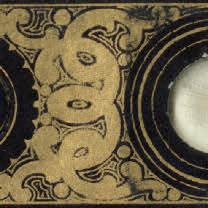
In 2013, an old but unassuming nine-drawer wooden cabinet with porcelain knobs caught Ohio History Connection Natural History Curator Dave Dyer’s eye. Inside, he was amazed to discover an array of beautifully prepared 19th-century French microscope slides, though the best was yet to come: In one of the drawers was a folded paper packet marked with the initials “W.S.S.”
Funky Worm
THE OHIO PLAYERS AND THE BIRTH OF DAYTON FUNK
This year marks the 50th since the Ohio Players’ breakout single, Funky Worm, reached No. 1 on the Billboard R&B chart. How Dayton funk came to be is a version of how the Motown sound was born in Detroit, or Chicago blues in that city—a stew that drew upon a Black population with Southern roots, music instruction in public schools and churches, and happy accidents between kids who knew one another from the neighborhood and classrooms.

OHIOHISTORY.ORG 3 24
34
40 30
FROM OUR EDITORS
Newspapers are the first draft of history, or so it’s been said. On rare occasions, they remain the only draft.
Searching for items to include in the Learn More section of our Hattie Moseley feature (see page 24), we traveled through an information desert. No combination of search words on Google or OhioLink or any number of databases bore fruit for the Springfield civil rights champion.
We did learn about Hattie Moseley Austin. A Saratoga Springs, New York, culinary institution, she opened Hattie’s Chicken Shack in 1938 and ran it until the 1990s. The restaurant changed owners and is now run by Chef Jasper, aka “the chicken whisperer.”
But back to our Springfield Hattie: A search of half a dozen encyclopedias of significant African Americans came up empty, though we were reminded at every turn that Carol Moseley Braun was the first Black woman elected to Congress.
So we’d like to thank the Springfield News-Sun for serving as the torchbearer for Hattie Moseley. Freelancer Tom Stafford relied in part on a 1990 News-Sun story written by Bill Monaghan as one of his sources. But for all you aspiring historians or journalists out there, Hattie’s story has yet to be told at any length.
F Garrett Morgan’s story is an easier dive. He’s known in northeast Ohio as “the unstoppable inventor” of one of the first gas masks and of an improved, three-way traffic light adopted across the country. But Morgan had to scrap for his proper due (see page 30) and overcome prejudice to flourish first in Cincinnati, then in Cleveland, where he died in 1963. According to the Biography.com website, “There was some resistance to Morgan’s (gas mask) among buyers, particularly in the South, where racial tension remained palpable despite advancements in African American rights.
“In an effort to counteract the resistance to his products, Morgan hired a white actor to pose as ‘the inventor’ during presentations of his breathing device; Morgan would pose as the inventor’s sidekick, disguised as a Native American named ‘Big Chief Mason,’ and, wearing his hood, enter areas otherwise unsafe for breathing. The tactic was successful; sales of the device were brisk, especially from firefighters and rescue workers.”
F William Sullivant (see page 34) was a renowned central Ohio botanist who rose to prominence in the 1840s. By the time he died in 1873, he was considered the world’s foremost bryologist (bryology is the study of mosses). Ohio History Central has a short biography of him. His legacy is secure.
F R&B group Lakeside dubbed its hometown, Dayton, “The Land of Funk” (see page 40) and why not? In the 1970s, the area produced a disproportionate amount of successful funk music created by the Ohio Players, Zapp, Slave, Heatwave and, of course, Lakeside.
Can it really be 50 years since Dayton’s funk explosion began with the Ohio Players’ No. 1 R&B single Funky Worm? The phenomenon wasn’t just regional, either. Walter “Junie” Morrison performed with the Ohio Players in the early 1970s before becoming musical director of arguably the greatest band in the genre, Parliament-Funkadelic.
In every issue of Echoes Magazine, we feature the stories of Ohio History Connection members and other Ohioans to stoke memories and shed light on our shared past.
For this issue, we asked, Who’s the most notorious character from your community? ”
Here are some of your responses:
AXIS SALLY
Possibly the most notorious person that came out of my hometown of Conneaut was Mildred Gillars. Perhaps you know her better as “Axis Sally.” She was convicted of treason after being a Nazi propagandist during WWII. As a teen, she went to school in Conneaut and is well-known there, but may be less familiar to most Ohioans.
—Bert Drennen, Broadview Heights
JOHN
DILLINGER
“Staging a bold daylight robbery, five well-dressed bandits held up the Citizens National Bank at Main and Church streets in Bluffton at noon
Monday, Aug. 14, 1933, and escaped with loot of $2,100.” Six weeks later, John Dillinger confessed to the robbery. Had everyone who claimed to have been on Main Street at the time actually been there, they would have filled a football field. In reality, fewer than eight people witnessed Dillinger’s five-minute Bluffton visit. But among eyewitnesses was Bluffton News editor Ted Biery, who wrote my well-scripted opening sentence, “Staging a bold daylight robbery….” Soon stories of
4 Echoes | MARCH & APRIL 2023
“
What ’s
Your Story?
robberies that never happened created a narrative of their own, including this one: A filling station owner claimed the gang filled up their tank at his station prior to the robbery. On their way out of town, they honked and waved to him. That didn’t happen, but John Dillinger did visit Bluffton in 1933.
—Fred Steiner, Bluffton
DILLINGER, AGAIN
We bought our old farmhouse in April 1989. We were newly married and expecting our first child when we moved in, full of hopes to fill our five-bedroom house with lots of little Spencers. We had searched all over Allen County for just the right farmhouse and finally found one in northern Auglaize County on the old Dixie Highway, now County Road 25A. We were “over-the-moon” excited to own a small part of history in our residence, which was built in 1892. Our house was built by the Brentlinger family, then later owned by the Shafer family before the Spencer family made it their home. After we moved in, we heard folktales of John Dillinger staying in our home, which was at one time an inn lying just south of Lima between Cridersville and Wapakoneta. It was a sad day for Lima on October 12, 1933, when notorious gangster
NOTORIOUS CHARACTERS
John Dillinger broke out of the Allen County jail. He was awaiting trial after being arrested by the Dayton police on September 22 for robbing a bank in New Carlisle. After his escape, which resulted in the killing of Sheriff Jesse Sarber, he went on a nationwide crime spree with several other fugitives known as the Dillinger Gang. We have no records of when he may have stayed here, but I often wonder if John Dillinger may have ditched one of his “heaters” in the place. Up until now, I haven’t found any evidence. I wonder if the ground where the old outhouse stood could tell the tale. Some things just remain a mystery, but what a piece of folk legend we can tell.
—Terri Spencer, Wapakoneta
MAURICE DESJARDINS
Three is an unlucky number. At 2:17 p.m. on April 30, 1968, Maurice Desjardins robbed the Centerville, Ohio, bank; he did it again on June 17 and then again on July 11, when he was finally apprehended. Two days later, while in the Montgomery County jail, Desjardins hanged himself. His body was unclaimed, so he was buried in an unmarked grave in Woodland Cemetery. In 2014, Janet Thobaban, a Centerville historical society member, located the grave and related his story to me
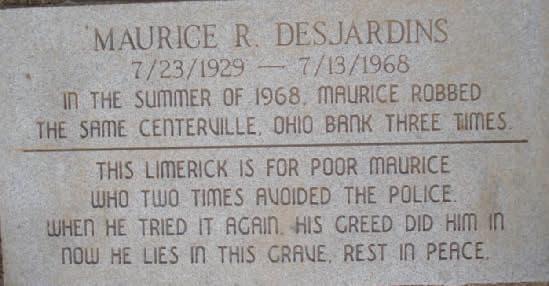
and a few other ne’er-do-well retirees. We decided Desjardins needed to be recognized for his audacity, so we raised the funds for a gravestone. On Wednesday, July 11, 2014, at 2:17 p.m., it was unveiled during a brief ceremony at Woodland Cemetery, witnessed by 23 contributors. The ceremony included a flyover (admittedly unplanned); the unveiling of the marker; a summary of Maurice’s story, including how he got caught; a prayer for his soul; and taps. Lemonade and cookies were enjoyed by the attendees following the ceremony.
—Jerry Strange, Centerville
WHAT’S YOUR STORY?
We want to know your stories, so in every issue of Echoes Magazine we ask you a question, then run selected answers in the following issue. Here’s the question for May & June:
Had it not been torn down in 2014, Beulah Park thoroughbred racecourse in Grove City would be celebrating its 100th anniversary this year. What are your memories of attending the horse races in Ohio, thoroughbred or standardbred? Did you go Friday nights with the family? See the harness races at a county fair? What did you enjoy about them?
Email your story responses (50 to 150 words) by March 10 to echoes@ohiohistory.org or, if you follow us on Facebook, send us a Facebook message.
OHIOHISTORY.ORG 5
On July 11, 2014, a group of Centerville and Washington Township residents placed this tombstone on the previously unmarked grave of Maurice Desjardins at Dayton’s historic Woodland Cemetery & Arboretum.
Jerry Strange
In the News
HAYES 200TH Hear Fisk Jubilee Singers April 2 in Fremont
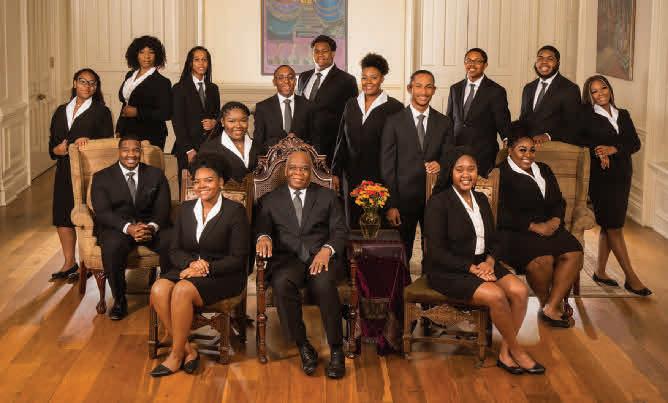
The Fisk Jubilee Singers from Fisk University in Nashville, Tennessee, came to the Hayes estate, Spiegel Grove in Fremont, Ohio, to sing for President Rutherford B. Hayes in May 1882. Hayes noted their visit in his diary and, although he didn’t specify what they sang or where they performed, he noted that they made an excellent impression on him.
RETURN TO FREMONT
On Sunday, April 2, at 3 p.m., the Fisk Jubilee Singers return to Fremont as one of the major events in the ongoing commemoration of the 200th birthday of President Hayes, which was Oct. 4, 2022. Hosted
by the Ohio History Connection’s Hayes Presidential Library & Museums, they’ll perform in concert at Grace Lutheran Church, 705 W. State St., Fremont.
World-renowned, the Fisk Jubilee Singers have performed for audiences worldwide since the group originated in 1871 to help raise money for the university. At that time, Fisk was struggling to stay open.
KNOWN FOR SPIRITUALS
The original Fisk Jubilee Singers introduced “slave songs” to the world and were instrumental in preserving the unique American musical tradition today known as spirituals. Breaking racial barriers in the United States and abroad in the
late 19th century, they sang for U.S. presidents and entertained kings and queens in Europe. During their first tour of Europe in 1873, they raised more than $150,000 for Fisk University to build Jubilee Hall, now a National Historic Landmark.
“We are thrilled to have the Fisk Jubilee Singers return to Fremont,” says Christie Weininger, executive director of Hayes Presidential Library & Museums. “Not only are they an outstanding musical ensemble, but their institutional history and connection to Spiegel Grove makes their performance very meaningful.”
Recipient of the National Medal of Arts in 2008, the group has been inducted into the Gospel Music Hall of Fame and the Music City Walk of Fame and has received the Tennessee Folklife Heritage Award.
GET TICKETS
Tickets for the April 2 performance are $10, $5/ages 13–17 and free/age 12 and under. Order at rbhayes.org Questions? Call Rutherford B. Hayes Presidential Library & Museums at 800.998.7737.
For a schedule of more Hayes 200th events through October 2023, visit rbhayes.org/rbh200 or rbhayes.org/ events. Croghan Colonial Bank is sponsoring the Hayes 200th Birthday Celebration.
6 Echoes | MARCH & APRIL 2023
Left: Fisk Jubilee Singers
Fisk University
FROM OUR DIRECTOR

I’ve always respected the work of the Ohio History Connection’s State Historic Preservation Office, and recently I’ve been able to be closer to that work.
Created out of the National Historic Preservation Act of 1966, the State Historic Preservation Office has been part of our organization ever since, in our capacity as the state’s history partner. Among its many responsibilities, it assists with recommending additions to the National Register of Historic Places, a list of historically important places nationwide that are worth saving.
I’m excited to see emails almost monthly that share new Ohio additions to the National Register, and on my travels around our state, I also enjoy noting places I’m visiting that are listed.
Recently I had the pleasure of visiting the Governor’s Residence and Heritage Garden in Bexley for a dinner honoring a visit by Susan Eisenhower—granddaughter of Dwight Eisenhower—who was in town for a book talk. Added to the National Register in 1983, the Governor’s Residence offers tours by appointment on Wednesdays, and is a beautiful site.
Added to the National Register in 1972, Cincinnati Union Terminal is an iconic work of art and architecture that speaks to a time when train travel held such a different place in Americans’ lives. It now houses the Cincinnati Museum Center, home to the Cincinnati History Museum, a children’s museum, a natural history museum and other experiences. I attended their annual fundraiser this year, and our whole family enjoyed a visit last summer.
Dennison Railroad Depot Museum housed a World War II canteen. Scores of American GIs heading across the country to the European or Pacific theatres passed through Dennison. I visited in December for an America 250–Ohio commission meeting. Listed in the National Register in 1976, the depot received the even higher designation of National Historic Landmark in 2011.
Many Ohio History Connection sites I’ve visited recently are on the National Register, including Rutherford B. Hayes Presidential Library & Museums, Fort Laurens—listed as an archaeological site—and the Harriet Beecher Stowe House.

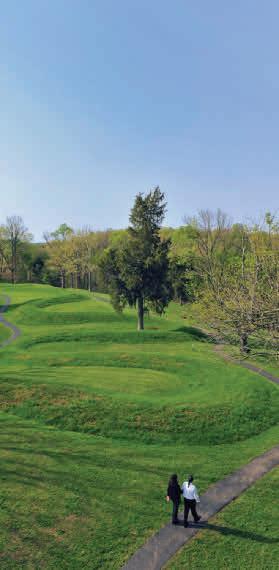
As I travel the state and speak to groups, I let them know that one way they can support Ohio history is to visit historic places in their own communities. I hope you can enjoy some hometown travel into the past with the National Register as your guide.

I’d like to acknowledge my predecessor as executive director & CEO, Burt Logan, who also served as Ohio’s State Historic Preservation Officer during his 14-year tenure. Thanks, Burt, for your legacy of leadership and service to Ohio and the Ohio History Connection.

OHIOHISTORY.ORG 7 WE HAVE Support, renew or find it at ohiohistory.org
As executive director & CEO, I have the privilege of learning more about all of our areas of operation.
Megan Wood | Executive Director & CEO, Ohio History Connection
THANKS, BURT! Retiring CEO Burt Logan Helped Set the Course for Today’s Ohio History Connection
by Neil Thompson
When Burt Logan arrived in Columbus in December 2009, America was emerging from the throes of a Great Recession that had left many organizations adrift. But the Ohio History Connection, then still known as the Ohio Historical Society, had just concluded its search for a captain to steer through the curtain of gloom wrought by the national financial crisis and a sinking public image— and Logan was the man for the job. More than 13 years later, Logan has relinquished the tiller, but the course he plotted guides the Ohio History Connection as a North Star.
HELPED CHART A COURSE
“Many, many hands have been pulling the oars,” says Logan, 69, reflecting on the years of labor that rescued the organization from its fragile state in 2009. “But if I could say I did anything, it was to be able to see through the fog and help chart a course that brought us to where we are today.”
Logan led the Ohio History Connection as executive director and CEO until July 31, 2022, a few months after he announced his plans to retire in early 2023. On Aug. 1, 2022, he transitioned to the role of executive consultant to the board of trustees through Feb. 28, 2023, and was succeeded by Megan Wood, who previously was director of cultural resources.
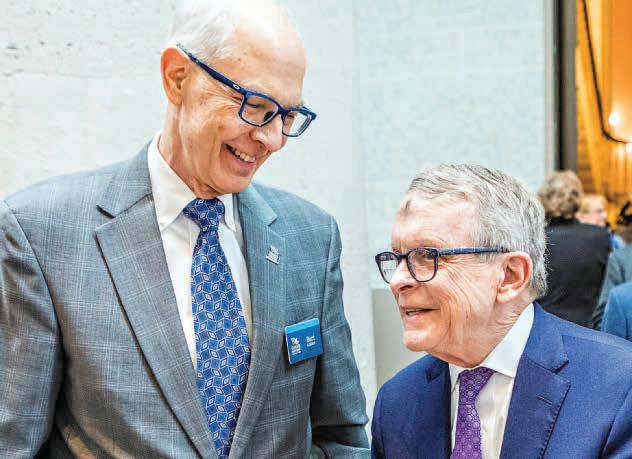
His leadership and commitment to the field of public history helped the Ohio History Connection embark on a more visible, accessible and stable path coming out of the recession, building a team to repair the organization’s reputation, trust and visibility, as well as its financial footing.
SAW THE POTENTIAL
“In coming here, I knew there would be challenges, but I was never really troubled by those things,” says Logan, who was executive director/president of the U.S.S. Constitution Museum in Boston from 1995 to 2009. “I could see so much potential in the organization. I was trying to help change the narrative a bit, but also I wanted to ensure the organization was focused on fulfilling its mission to Ohioans to preserve and share the state’s history.”
During his tenure, Logan did just that. He deepened relationships throughout state government; rebranded the organization as the Ohio History Connection to embrace a 21st-century approach and persona; established the Ohio History Fund, which has supported more than 100 projects to preserve and share the state’s heritage; reopened Ohio Village, which was closed from 2003 to 2012; and expanded programming to include the stories of new Americans, underserved communities and other groups.
He also helped establish relations with 46 federally recognized
American Tribes that have ancestral ties to Ohio and, for the first time since 1885, welcomed, recognized and gave them a voice in the organization and on the board of trustees. Those relationships have been especially critical to the advancement of the UNESCO World Heritage List application for Ohio’s Hopewell Ceremonial Earthworks.
“The relationships we have established with the Tribal Nations have been extremely rewarding, both professionally and personally,” Logan says. “It’s been gratifying to embrace the work we are doing and see it being welcomed through the partnerships and relationships forged with the Historic Ohio Tribes.” But Logan’s legacy is not limited to such lofty accomplishments. For example, his sincerity and attention to detail made him beloved, and he knew every employee’s name and greeted them accordingly.
“I feel it is a privilege to have worked in this field and with great people,” he says.
8 Echoes | MARCH & APRIL 2023
ENTHRALLED BY HISTORY
Indeed, public history has been more of a calling than a career for Logan.
“I’ve always been enthralled by history,” he says. “But the facts and dates and events—those are placeholders. History is so much more than that. It’s the continuum of how we arrived at where we are today from wherever we have started.”
Logan got his start after he graduated from the United States Military Academy at West Point, New York, in 1976, was commissioned in the field artillery and served on active duty until 1981.
After his five years serving in the Army, he said, he just kept coming back to public history. So in 1983, he earned a master of arts in history museum studies from the Cooperstown Graduate Program in Cooperstown, New York, that launched a 40-year museum career.
A TIME FOR EVERYTHING
“I’ve always felt there is a time for everything,” Logan says. “I’ve been very fortunate and blessed, and I’m ready to do some of the other things that give a special meaning to life.”
Though that means Logan is leaving Ohio—he and his wife, Bonnie, are moving to Sacramento, California, to be closer to two of their sons and three granddaughters—he continues to emphasize the influence and potential of the organization he helped recalibrate.
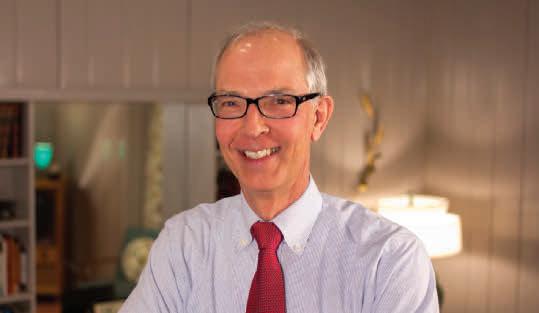
“Hopefully, the Ohio History Connection has made an impact and will continue to help others understand the continuum of history— of where we are today, what led us here and how we can make the future even better,” he says.

OHIOHISTORY.ORG 9
I feel it is a privilege to have worked in this field and with great people.
Left: Burt Logan with Ohio Governor Mike DeWine during the annual Statehood Day observance. Top right: Logan with winning students at Ohio’s annual History Day contest. Bottom right: Logan in the enameled-steel Lustron house in the exhibit 1950s— Building the American Dream, at the Ohio History Center in Columbus.
ON DISPLAY
Making Ohio Home— Early Ohio Immigrant Experiences

Explore stories of seven immigrants who helped Ohio grow from a population of 45,365 in 1800 to more than 4.1 million in 1900 in a new display, Making Ohio Home— Early Ohio Immigrant Experiences, now at the Ohio History Center in Columbus.
The display combines the personal stories of seven immigrants to Ohio from within and beyond the borders of the United States, with pieces from Ohio History Connection collections that are associated with them.
They are New York painter Robert Duncanson (Cincinnati); German gunsmith Christian Siebert (Columbus); New York glassblower Jonathan Tinker (Mantua); Italian tool sharpener Florindo DiPinto (Cleveland); German homesteader Herman Fornholt (Wapakoneta); English potter Thomas Croxall (East Liverpool); and Massachusettsborn advocate Catherine Fay Ewing (Marietta).
Making Ohio Home is included with Ohio History Center museum admission. Ohio History Connection members enjoy free admission.

CONESTOGA
April 29 Event Benefits
Poindexter Village Museum & Cultural Center
Conestoga, our volunteer fundraising support group, hosts its annual fundraiser on Saturday, April 29, benefiting the Ohio History Connection’s most recently added historic site, Poindexter Village Museum & Cultural Center in Columbus. Partnering in the event is the James Preston Poindexter Foundation.
Celebrating History with Poindexter Village takes place at the King Arts Complex, 835 Mt. Vernon Ave., Columbus, from 3 to 6 p.m. Guests will enjoy great food and drink, access to the center’s exhibits and artwork, plus a raffle for outstanding prize packages.
DEDICATED IN 1940
President Franklin D. Roosevelt dedicated Poindexter Village in 1940. One of our nation’s first public housing projects, the 400-unit apartment complex was named in honor of local community leader and abolitionist Rev. James P. Poindexter (1819–1907).
Poindexter Village was built to provide quality low-cost housing for Black families. Though many middleclass Black households could afford homes in other neighborhoods, racial restrictions barred them from buying or renting them. Early Poindexter residents lived in a socioeconomically diverse community of doctors, professors and lawyers, mixed with factory workers, domestic servants and merchants. More than public housing, it was a community that nurtured and supported its residents.
Two original buildings are being transformed into a museum and learning center to share the story of this close-knit community. Through oral histories, memorabilia and exhibits, artistic endeavors and community programming—including an annual drum circle—visitors will learn the rich history of this important African American community, and its place in the national story of the Great Migration.
Conestoga has raised and contributed almost $788,000 to support Ohio History Connection exhibits and programming since its founding in 1986.
GET TICKETS
Tickets for the April 29 fundraiser are $100/person. For event details and information on how to order, visit ohiohistory.org/conestoga or contact Ohio History Connection Development Officer Abby Reynolds at 614.297.2320 or areynolds@ ohiohistory.org
OHIO VILLAGE Members’ Day April 1 Launches Spring Season
Ohio Village, our recreated 19thcentury community, reopens on Saturdays and Sundays April 1 through May 14 from 10 a.m. to 5 p.m. April 1 is a special preview day reserved for Ohio History Connection members. The village opens to all starting Sunday, April 2. Visit this spring and meet villagers old and new, all eager to share their stories. While in town, explore the one-room school, pharmacy, bank, newspaper office, Emporium and more village establishments.
Ohio Village is just north of the Ohio History Center at I-71 and 17th Avenue (Exit 111) in Columbus. During spring weekends, enter through the Ohio History Center museum. Ohio Village is included with Ohio History Center museum admission. Ohio History Connection members enjoy free admission. Questions? Call 800.686.6124 or visit ohiohistory.org/ohiovillage
10 Echoes | MARCH & APRIL 2023
Making Ohio Home
Poindexter Village, Columbus
OHIO STORIES Maya Lin
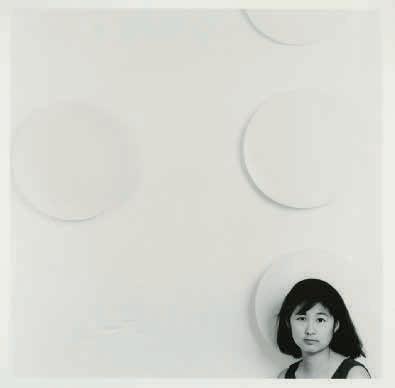
Maya Ying Lin was born in Athens, Ohio, on Oct. 5, 1959. Her parents arrived in the U.S. from China in 1949. Both were professors at Ohio University—her father was a ceramic artist and the dean of the Ohio University art school, and her mother was a poet and a professor of Asian and English literature. In school, Lin did well in both mathematics and art. After graduation, she enrolled at Yale University, where she studied architecture and sculpture. Her professors encouraged her to pick just one field to study, but she refused, saying, “I consider myself both an artist and an architect.”
DESIGNED VIETNAM VETERANS MEMORIAL

In 1981, a national contest was held to design a monument to remember the veterans who fought in the Vietnam War, to be located in Washington, D.C. A group of architects and artists chose Lin’s design as the winner. Lin was only 21 years old when she entered the contest—still a college student at Yale at the time. The simple design was a V-shaped, black granite wall that wedged into the ground. The wall lists the names of U.S. service members who died or went missing in action during the Vietnam War, and is known as the Vietnam Veterans Memorial. Some critics disliked Lin’s design, as it was different from past monuments that celebrated war and those who served. Some critics thought an Asian American woman was the wrong designer for a monument that honors veterans who fought in a war in Asia. Lin faced harsh disapproval of her design, her gender and her race. But the design was touching for loved ones of those who died in the war.
In 1986, Lin earned a master’s degree in architecture. While she’s mostly known for the several monuments she’s designed, her later work isn’t focused on memorials and monuments but on nature. She often uses natural materials in her art and designs, creating sustainable buildings. These designs show the relationship between nature and architecture, and her use of natural resources shows her desire for the protection of nature. Lin’s art has been shown in exhibits at museums across the world, and she’s been featured in interviews and films. She wrote the book Boundaries about her work and creative process in 2006. In 2009, Lin won the National Medal of Arts, the highest award for artistic excellence in America. President Barack Obama awarded her the Presidential Medal of Freedom in 2016, the nation’s highest nonmilitary award. Lin continues to design and create today. Her works join what we can see and what we can’t see in the environment to present a new way to see the world around us.
ARTIST AND ARCHITECT
Maya Lin is famous as both an artist and an architect. Not everyone liked her design for the Vietnam Veterans Memorial, but it helped Americans all over the nation honor the lives lost in the war. Her design didn’t glorify war; instead, the simple black wall with thousands of names offered Americans a new way to remember war. Lin’s design for the memorial has gained national praise, and it’s one of the most visited monuments in the nation.
This biography is from Ohio History Central, our online encyclopedia of Ohio history. Discover many more stories of Ohio history at ohiohistorycentral.org
Signing up for autorenewal is an option when you join or renew your membership online. You can also request it when you join or renew by phone or mail, if you use a credit card.
OHIOHISTORY.ORG 11
Left: Maya Lin, 1998. Right: Vietnam Veterans Memorial, Washington, D.C.
Wikimedia Commons | U.S.
Library of Congress, Prints & Photographs Division, © Nancy Lee Katz, [LC-DIG-ppss-01452]
Navy photo by Photographer’s Mate 2nd Class Daniel J. McLain
HISTORIC PRESERVATION
Recent Ohio Additions to the National Register of Historic Places

ARLINGTON HEIGHTS • HAMILTON COUNTY
ARLINGTON SCHOOL
607 Carthage Ave.
Added to the National Register for its association with the history of education in Arlington Heights and for its local architectural significance, the Arlington School served as the first and only school building in the small residential suburb of Arlington Heights for 80 years, from 1934 to 2014. It was one of the first schools completed in Ohio during the Great Depression under the auspices of the federal Public Works Administration or PWA, which enabled construction of more than 3,000 school buildings throughout the country to provide modern educational facilities. Designed by Cincinnati architects Grunkemeyer & Sullivan, it’s an example of the Classical Revival style, with ornaments including an oval medallion draped with swags, and limestone urns.
CLEVELAND • CUYAHOGA COUNTY
RAUCH & LANG CARRIAGE CO. BUILDING
2168 W. 25th St.
Rauch & Lang Carriage Co. is associated with the history of Cleveland’s 19th-century carriagebuilding industry, its early-20thcentury automobile industry and its materials-handling industry until 1947. The company occupied the same location for about 85 years. Rauch & Lang’s line of luxury carriages and commercial wagons

established its reputation for quality in Ohio and beyond. The company transitioned to making automobiles in 1905, producing expensive Rauch & Lang electrics for 15 years. As gasoline-powered automobiles became dominant in the 1910s, Rauch & Lang’s successor firms, Baker R & L and Baker-Raulang, focused on two product lines in the 1920s and 1930s: automobile bodies for many well-known makers of gasoline-powered vehicles, including Ford’s “woodie” station wagons, and small electric industrial tractors and trucks for factory and warehouse use. The oldest section of the building dates to 1878. Baker-Raulang moved out in 1947.
CLEVELAND • CUYAHOGA COUNTY
SIDAWAY BRIDGE
Sidaway Avenue over Kingsbury Run, connecting Sidaway Avenue and East 67th and Sidaway Avenue near Berwick Road
This 1930 pedestrian bridge once connected Cleveland’s largely white, Polish, workingclass Jackowo neighborhood and Black families living in public housing in the Garden Valley neighborhood. Set on fire during the July 1966 Hough riots, it was decommissioned by the city and became a lasting symbol of local racial strife associated with desegregation in housing and public education. In his decision on a landmark 1976 lawsuit brought by the NAACP, federal judge Frank Battisti identified the bridge as a contributing factor to school segregation and neighborhood separation. While a symbol of strife, it’s also one of the few remaining

examples of the American method of steel cable suspension used in construction of a pedestrian bridge, the same method used in building the Brooklyn Bridge. It’s the only pedestrian suspension bridge in Ohio that’s been documented by the Historic American Engineering Record.
DELAWARE • DELAWARE COUNTY
CLEVELAND,
COLUMBUS,
CINCINNATI & INDIANAPOLIS RAILROAD DEPOT 60 Lake St.
The Cleveland, Columbus, Cincinnati & Indianapolis Railroad Depot has been added to the National Register as a reflection of Delaware’s railroad history. The railroad brought prosperity to the small, landlocked city, facilitating agricultural, educational and industrial growth. Completed in 1887, it served as a passenger depot for 63 years.

12 Echoes | MARCH & APRIL 2023
LITHOPOLIS • FAIRFIELD COUNTY
WAGNALLS MEMORIAL
150 S.E. Columbus St.
Lithopolis had fewer than 300 people in 1925, when philanthropist Mabel Wagnalls Jones presented this Tudor Revival-style landmark to the village and Bloom Township in memory of her parents, Hester Anna Willis Wagnalls and Adam W. Wagnalls. Both born in Lithopolis, they co-founded publishing company Funk & Wagnalls. The Wagnalls Memorial reflects the continuing impact of industrialbased wealth and philanthropy that brought cultural and educational opportunities to places large and small across our state in the late19th and early-20th centuries.
Designed by architect Ray Sims of Columbus, the memorial houses a library, community center, museum, auditorium and meeting rooms. With his firm Sims, Cornelius & Schooley, Architects & Engineers, Sims also designed a 1961 addition built to serve a growing number of children in the region. A related Wagnalls Memorial Foundation awards scholarships to local graduates.

MADEIRA • HAMILTON COUNTY
MADEIRA RAILROAD DEPOT

7701 Railroad Ave.
Built in 1892, the Madeira Railroad Depot is associated with the role of rail transportation in the development of this suburban Cincinnati community. Coinciding with construction of an earlier depot on the site, Madeira’s first subdivision was platted in 1871, and the community was named after the treasurer of the railroad that built it. The depot is architecturally significant as an example of the Stick style that the B&O Railroad used for stations on this line in the 1880s and 1890s. It was in use by the B&O until 1971.
TOLEDO • LUCAS COUNTY
THE MEISTER APARTMENTS
1432–1434 (1430–1436) N. Huron St.
Added to the National Register for its local architectural significance, this brick, Italianate-style, two-family townhouse-type apartment building was completed in 1887 and modified to four units in 1908. Features typical of the Italianate style, which was widely popular in Ohio from the 1840s through 1890s, include the overall vertical emphasis, bracketed cornice, low roof, tall one-over-one windows with ornamental hoodmolds, two fullheight bay windows, front porch roof resting on incised wooden brackets or consoles and original ornamental wooden side porches.

OHIOHISTORY.ORG 13 All National Register photos courtesy State Historic Preservation Office except as credited otherwise
Ɱ , CC0, via Wikimedia Commons
Explore Ohio’s Natural History at Cedar Bog Nature Preserve
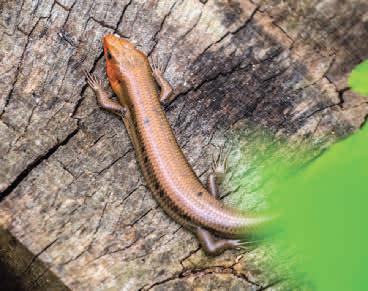

To quote my husband, “This place feels really significant.” After a walk through Cedar Bog Nature Preserve, it’s easy to see why it was Ohio’s first designated nature preserve in 1942 and is regarded by some as the crown jewel of our state’s natural areas.
Cedar Bog (the site is actually a fen and not a bog, but you can find out all about that when you visit) is home to 40% of the rare and endangered plant species in Ohio. I’m no plant expert, but I could definitely feel that Cedar Bog is different from other natural areas where I’ve hiked.
How much time: I would recommend you allow 1½ to 2 hours to give yourself time to poke around the Nature Center and take a leisurely and observant walk around the site. Although the boardwalk is just 1.2 miles long, it still took us over an hour to walk it because we stopped to look at flowers in bloom, take
pictures of the wildlife—we saw deer, five-lined skinks and several types of dragonflies—and read the informative signs.
My favorites: I appreciated the quick overview a site volunteer gave us before we went outside. She told us what was in bloom and where to look. I’ve been to Cedar Bog twice, and each time I’ve been impressed with the passion the volunteers have for the site. If you’re lucky enough to be there when site manager Mike Crackel is in the Nature Center, be sure to talk with him. He knows every inch of the site and can provide insider info that will inform your experience.
Truda’s Tips: I would recommend that you call ahead to make sure the boardwalk is open before you head to Cedar Bog. The staff closes the boardwalk to the public anytime the expected wind speeds may exceed 25-30 mph or if there are other unsafe conditions.
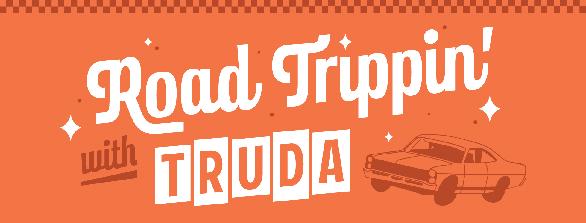
If you’re planning to make a day of it, you have a couple of options for lunch. There are picnic tables just outside the Nature Center. We took our lunch and enjoyed our PB&Js with a lovely view of the site. If you’re looking for restaurants, Urbana has a wide variety and is just a short 10-minute drive down U.S. 68. Springfield is similarly close by. Don’t miss: Be sure to give yourself enough time to thoroughly investigate the small, but very thoughtfully curated, Nature Center. There’s a wealth of information in the displays that will make your hike more meaningful and enjoyable. And don’t forget to consult the detailed binder that shows everything in bloom by month. I loved knowing exactly what I should be on the lookout for during my hike.
Ohio History Connection members enjoy free regular admission to Cedar Bog and 50+ more museums and attractions across the Buckeye State (see page 15). Learn more about visiting Cedar Bog at cedarbognp.org or ohiohistory.org/cedarbog
—Truda Shinker is the Ohio History Connection’s department manager for membership.
Left:
14 Echoes | MARCH & APRIL 2023
Southern blue flag iris ( Iris virginica) at the Ohio History Connection’s Cedar Bog Nature Preserve. Right: Five-lined skink ( Plestiodon fasciatus) at Cedar Bog Nature Preserve.
OHIO HISTORY CONNECTION
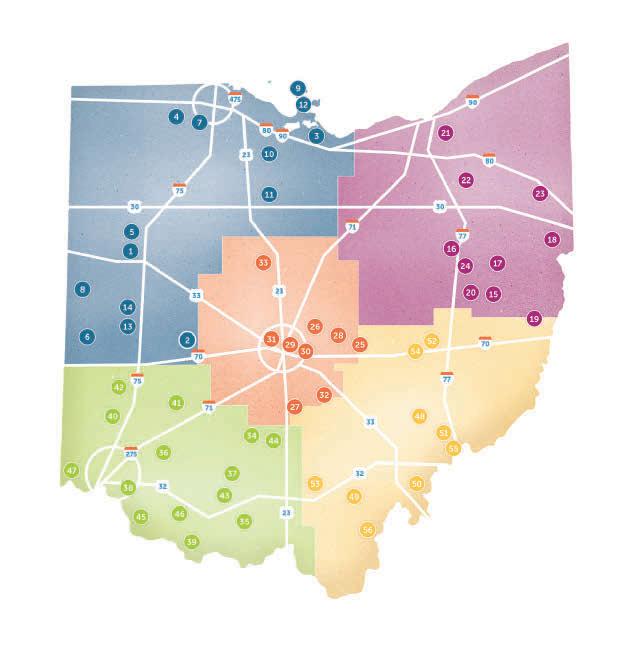
Historic Sites & Museums
NORTHWEST OHIO
Armstrong Air & Space Museum
Cedar Bog Nature Preserve
Cooke-Dorn House
Fallen Timbers Battlefield Memorial Park
Fort Amanda Memorial Park
Fort Jefferson Memorial Park
Fort Meigs
Fort Recovery Museum & Monument
Glacial Grooves Geological Preserve
Hayes Presidential Library & Museums
Indian Mill
Inscription Rock Petroglyphs
Johnston Farm & Indian Agency
Lockington Locks
NORTHEAST OHIO
Custer Monument
Fort Laurens
McCook House
Museum of Ceramics
Quaker Yearly Meeting House
(Open by Appointment) & Free
Labor Store/Benjamin Lundy House
(Preservation in Progress • Not Open)
Schoenbrunn Village
Shaker Historical Museum
Tallmadge Church
Youngstown Historical Center of Industry & Labor
Zoar Village
CENTRAL OHIO
Flint Ridge Ancient Quarries & Nature Preserve
Hanby House
Logan Elm
Newark Earthworks
Ohio History Center & Ohio Village
Poindexter Village Historic Site
(Preservation in Progress • Not Open)
Shrum Mound
Wahkeena Nature Preserve
Warren G. Harding Presidential Sites
SOUTHWEST OHIO
Adena Mansion & Gardens
Davis Memorial Nature Preserve
Fort Ancient Earthworks & Nature Preserve
Fort Hill Earthworks & Nature Preserve
Harriet Beecher Stowe House
John Rankin House
Miamisburg Mound
National Afro-American
Laurence Dunbar House
SOUTHEAST OHIO
Big Bottom Memorial Park
Buckeye Furnace
Buffington Island Battlefield Memorial Park
Campus Martius Museum
John & Annie Glenn Museum
Leo Petroglyphs & Nature Preserve
National Road & Zane Grey Museum
Ohio River Museum
Our House Tavern
Ohio History Connection members enjoy free regular admission to these Ohio History Connection sites. Before traveling, visit ohiohistory.org/sites to confirm hours and any special requirements.
OHIOHISTORY.ORG 15
Museum
Story
1. 2. 3. 4. 5. 6. 7. 8. 9. 10. 11. 12. 13. 14. 15. 16. 17. 18. 19. 20. 21. 22. 23. 24. 25. 26. 27. 28. 29. 30. 31. 32. 33. 34. 35. 36. 37. 38. 39. 40. 41. 42. 43. 44. 45. 46 47. 48. 49. 50. 51. 52. 53. 54. 55. 56.
& Cultural Center Paul
Serpent Mound
Mound U.S. Grant Birthplace U.S. Grant Boyhood Home & Schoolhouse William Henry Harrison Tomb
PROGRAMS & EXHIBITS AT THE
Ohio History Center
BOOK TALK We Are the Troopers J
SAT., MARCH 11 • 2–3 P.M.
Ohio History Center, Columbus 4 Over nine seasons from 1971 to 1979, one professional football team—the Toledo Troopers—won seven championships, earning a place in the Pro Football Hall of Fame as the winningest team in pro football history. In We Are the Troopers: The Women of the Winningest Team in Pro Football History, Toledo native Stephen Guinan shares their remarkable story. Hear him speak about his book, and stick around for an autograph. Included with Ohio History Center museum admission. Ohio History Connection members enjoy free admission. 800.686.6124 or ohiohistory.org
PLEASURES OF THE CUP Mayhem at the Museum
SAT., MARCH 25 • 7–9 P.M.
Ohio History Center, Columbus 4 When a priceless cast of a bona fide Bigfoot print is stolen on opening night of a new Weird History exhibit, it's up to the VIP guests to step in and solve the mystery before the culprit escapes. Peek into some oddities of Ohio history while sampling historical cocktails during this hair-raising 21+ mystery event. Become a detective and help curators find their missing Bigfoot print before it's too late. Alcohol included with admission; each guest receives a souvenir sampling glass. $40, $35/Ohio History Connection member. Or, subscribe to our full 2023 Pleasures of the Cup series including Mayhem at the Museum (Saturday, March 25, 7–9 P.M.), Drinks of the Speakeasy (Saturday, May 13, 7–9 P.M.) and Mad for Martinis (Saturday, Aug. 12, 7–9
& Ohio Village
P.M.)—all in person at the Ohio History Center & Ohio Village in Columbus—for $110, $100/Ohio History Connection member. Advance registration required. 800.686.6124 or ohiohistory.org/mayhem
Due to construction at Ohio Village, Mayhem at the Museum has replaced the previously announced event Monocles & Brandy.
55+ CREATIVE AGING
African-Inspired Handmade Beads Polymer Clay Class
THURSDAYS, MARCH 30–APRIL 27 NOON–4 P.M.
Ohio History Center, Columbus 4 Learn to create a beautiful assortment of African-style beads that look just like the real thing, using polymer clay. Design your own necklace and stretchy bracelet with your finished batik bone beads, Ghanian krobo powdered glass beads, African indigo beads and African trade beads. On the last day of class, show off your work in front of friends and family in a class fashion show. All skill levels welcome. $40/age 55+, $35/Ohio History Connection member age $55+. Advance registration required. 800.686.6124 or info@ohiohistory.org
Supported in part by a grant from E.A. Michelson Philanthropy.
Ohio Village Spring Weekends
SPECIAL MEMBERS-ONLY OPENING
DAY EVENT SAT., APRIL 1
OPEN TO ALL SATURDAYS & SUNDAYS
APRIL 2–MAY 14
10 A.M.–5 P.M. • (CLOSED APRIL 9)
Ohio Village, Columbus 4 Step back in time in our re-created 19th-century community, where William McKinley is president and Gibson Girl-style shirtwaists are trending. Visit Ohio
Village on weekends through May 14, included with Ohio History Center & Ohio Village museum admission.* Ohio History Connection members enjoy free admission. 800.686.6124 or ohiohistory. org/village
SPECIAL FILM SCREENING
International Incidents
SAT., APRIL 1 • 1–3 P.M.
Ohio History Center, Columbus 4
See the documentary International Incidents, written and directed by Eric Weltner, chronicling three International Hockey League professional teams that called Columbus home between 1966 and 1977. Produced using still images, historical film footage, motion graphics and sound design, the film covers their collective history, statistics and anecdotes. Former players, owners, broadcasters and league executives participated in its creation. Included with Ohio History Center museum admission. Ohio History Connection members enjoy free admission. 800.686.6124 or ohiohistory.org
Spring Thaw
WEDS., APRIL 5–SAT., APRIL 8
10 A.M.–5 P.M.
Ohio History Center, Columbus 4 Celebrate the end of winter and learn something new with your family this spring break! Visit the Ohio History Center museum for a week of fun and interesting natural history programs. Included with museum admission. Ohio History Connection members enjoy free admission. 800.686.6124 or ohiohistory.org
The Dineh Tah’ Navajo Dancers and the Legacy of General
William T. Sherman
SUN., APRIL 16 • NOON–3 P.M.
Ohio History Center, Columbus 4 See the Dineh Tah’ Navajo Dancers perform traditional songs and dances, and stay for a presentation on Lancaster-born Gen. William Tecumseh Sherman’s role and legacy in the Indigenous peace treaties of the late 19th century. Included with Ohio History Center museum admission. Ohio History Connection members enjoy free admission. 800.686.6124 or ohiohistory.org
*Museum admission is $16; $14/ages 60+ or student with ID; $10/ages 4–12. Ohio History Connection members and ages 3 & under enjoy free admission.
16 Echoes | MARCH & APRIL 2023
Ohio Village Spring Weekends
HISTORY AFTER HOURS Totally ’80s!
SAT., APRIL 22 • 7–10 P.M.
Ohio History Center, Columbus 4 Dig out your crimper, grab your acid-wash jeans and pop in your shoulder pads because the Ohio History Connection is going back to the 1980s during this 21+ event! Jam to classic hits of the decade, play popular games of the time and enjoy more ’80s-themed activities. $25, $20/Ohio History Connection member. Advance registration required. 800.686.1541 or ohiohistory.org/afterhours
FEATURED EXHIBITS • • •
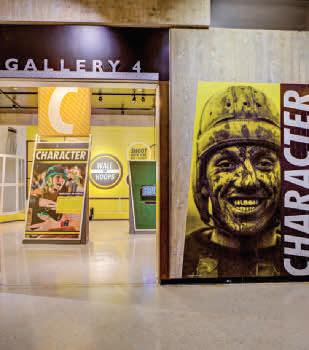
Making Ohio Home— Early Ohio Immigrant Experiences
Immigrants from both within and beyond the borders of the United States flocked to Ohio in the 1800s. They came in search of good farmland, better working conditions, political freedom and economic opportunities. Explore stories of seven Ohio immigrants who helped grow Ohio’s population from 45,365 in 1800 to more than 4.1 million in 1900.
Indigenous Wonders of Our World—The Hopewell Ceremonial Earthworks
ONGOING
Indigenous Wonders of Our World offers a look at eight 2,000-year-old Hopewell earthworks in Ohio: Fort Ancient, near Oregonia and Lebanon; Newark’s Great Circle and Octagon; and Hopewell Mound Group, Mound City, Hopeton Earthworks, Seip Earthworks and High Bank Works, all near Chillicothe. Unique
Ohio—Champion of Sports
in the world, they’re the focus of a nomination now underway proposing that they be named World Heritage Sites by UNESCO, the United Nations Educational, Scientific and Cultural Organization. The exhibit examines mathematical similarities among them, their enormous scale and their alignments to the solstices and/or the 18.6-year lunar cycle. An immersive component allows you to experience the astronomical alignments.
Ohio—Champion of Sports ONGOING
Ohio—Champion of Sports features more than 70 stories and 35 oral histories covering more than 25 sports ranging from baseball, football and basketball to roller derby, skateboarding and e-gaming. The exhibit showcases the Ohio athletes, coaches, owners and fans at the center of the action and explores sports through the themes of Character, Adversity, Innovation, Identity, Tradition and Victory—values that relate to the human condition—to connect a broad audience to Ohio’s national sports history. You can test your basketball skills at the Wall of Hoops, record a “victory dance” to share with family and friends, and record your own “One Minute Legends” sports story.
1950s—Building the American Dream ONGOING
Peek in the closets and snoop in the drawers of a real, fully furnished Lustron steel house made right here in Ohio. From the contents of the cupboards to the news on TV and the toys in the yard, this hands-on exhibit is a fascinating journey back in time.
World War I Display
ONGOING
See equipment, weapons, uniforms and memorabilia commemorating the centennial of World War I.
Ohio History Center & Ohio Village Hours

Museum
WEDS.–SUN. 10 A.M.–5 P.M.
CLOSED MON.–TUES.
CLOSED SUN., APRIL 9
Ohio Village
OPENS TO MEMBERS SAT., APRIL 1, AND TO ALL SUN., APRIL 2
HOURS FROM APRIL 1 THROUGH MAY 14: SAT. & SUN. 10 A.M.–5 P.M.
CLOSED SUN., APRIL 9
Third Floor Research Room
OPEN BY APPOINTMENT ONLY ohiohistory.org/learn/archives-library
WEDS. 12:30–3 P.M.
THURS. & FRI. 10 A.M.–3 P.M.
CLOSED SAT.–TUES.
Serving Grab-N-Go Snacks & Meals Mon.–Tues. • 9 a.m.–1 p.m. Weds.–Sun. • 10 a.m.–3 p.m.
Ohio History Connection Members Save 10% at the Plaza Cafe!
You can always call 800.686.6124 to reserve or purchase event tickets. Our friendly Visitor Services Associates are happy to help.
OHIOHISTORY.ORG 17
March is Women’s History Month. Follow the Star J to Women’s History Month programs in this issue of Echoes Magazine.
APRIL 1–MAY 14 ONGOING
Our
progressive cocktail parties
ATTEND FROM ANYWHERE!
Online Events
POWER OF VOICE SERIES
19th-Century Women— Domestic or Discontented? J
WEDS., MARCH 1 • 7–8:30 P.M. Walnut Hills Branch Library, 2533 Kemper Lane, Cincinnati, and Online— Attend from Anywhere! 4 Hosted by Harriet Beecher Stowe House, Cincinnati 4 See page 21.

MEMBER VIP
Behind the Scenes at Fort Meigs
THURS., MARCH 23 • 3–4 P.M.
Online—Attend from Anywhere! Hosted by the Ohio History Connection’s Membership Department 4 Find out what you can see and do at one of America’s largest reconstructed log forts. Go behind the scenes at Fort Meigs in Perrysburg with Ashley Phlipot, the site’s executive director, and John Thompson, manager of programming. Experts in their field and natural storytellers, they’ll give us a brief history of the fort, share stories and fill us in on upcoming events—you won’t want to miss it! Free to Ohio History Connection members with advance registration: ohiohistory.org/ behindfortmeigs
Presidential History Book Club
WEDS., MARCH 29 & APRIL 26
NOON–1 P.M.
Hayes Presidential Library & Museums, Fremont, and Online—Attend from Anywhere! 4 See page 20.
MEMBER VIP
The History of the White Wedding Dress
TUES., APRIL 18 • 3–4 P.M.
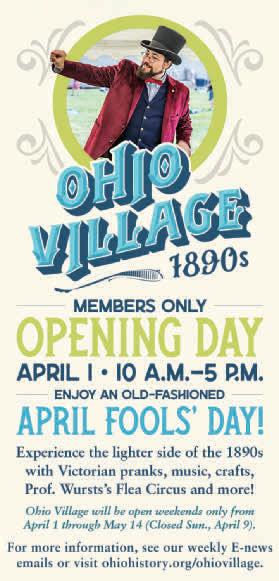
POWER OF VOICE SERIES
George Harris’s Voice in the Slavery Debate
WEDS., APRIL 5 • 7–8 P.M.
Walnut Hills Branch Library, 2533
Kemper Lane, Cincinnati, and Online—
Attend from Anywhere! 4 Hosted by Harriet Beecher Stowe House, Cincinnati 4 See page 23.
SEMI-COLON BOOK CLUB
The Doctors Blackwell J
SAT., APRIL 22 • 10–11 A.M.
Walnut Hills Branch Library, 2533
Kemper Lane, Cincinnati, and Online—
Attend from Anywhere! 4 Hosted by Harriet Beecher Stowe House, Cincinnati 4 See page 23.
800.686.1541
18 Echoes | MARCH & APRIL 2023
pair authentic adult beverages with experiences of days gone by. Mayhem at the Museum March 25 • Ohio History Center Drinks of the Speakeasy May 13 • Ohio Village Mad for Martinis August 12 • Ohio History Center ohiohistory.org/cup 800.686.1541 Advance
THE SERIES
AND SAVE!
April
7–10 p.m.
the
Online — Attend from Anywhere! 4 Join us for this special members-only webinar as history curator Marlise Schoeny explains the history of the white wedding dress and shares examples from the Ohio History Connection collection. Free to Ohio History Connection members with advance registration: ohiohistory.org/ weddingdress. the
registration required. BUY
NOW
Sat.,
22 •
Totally ’80s Jam to classic hits provided by our DJ, play popular games from
1980s, enjoy classic beverages of
era and more!
Snacks and credit-card-only bar. Advance registration required. ohiohistory.org/afterhours
Events & Exhibits
Many programs and events at Ohio History Connection museums and attractions require advance registration. To register, call the number or visit the website listed with each program. Our online calendar offers more upto-date information about programs and events at Ohio History Connection museums and attractions. Find it at ohiohistory.org/calendar
Questions? Call 800.840.6127
OHIO HISTORY DAY Regional History Day Contests
SAT., MARCH 4, 11, 18, 25 & APRIL 1
9 A.M.–5 P.M.
See sixth- through 12th-graders present their history projects, competing for a chance to move on to our April 22 statewide History Day competition.
MARCH 4: South Central (Region 9), Rio Grande; Northeast (Region 3), Cleveland; West Central (Region 7), Piqua. MARCH 11: Northwest (Region 1), Bowling Green; Central (Region 6), Columbus. MARCH 18: Southwest (Region 8), Cincinnati.
MARCH 25: North Central (Region 2), Sandusky; Southeast (Region 10), New Concord. APRIL 1: Northeast (Region 4), Youngstown. Get details at 800.686.6124 or ohiohistoryday.org.
Special thanks to Champion Sponsor Ohio’s 529 Plan, CollegeAdvantage, and to Sponsor William K. Laidlaw Jr. Memorial Endowment Fund.
Ohio Local History Alliance Regional Meetings
SATURDAYS, MARCH 4–APRIL 1
9 A.M.–4 P.M.
Active in local history? Register now for the Ohio Local History Alliance Regional Meeting in your vicinity. These annual gatherings of local historians and others active in local historical societies, museums and related organizations start Saturday, March 4. This year’s theme
is History as Necessity. Each meeting includes a session related to the theme, plus additional skill-building sessions; reports from the Ohio Local History Alliance and the Ohio History Connection; an opportunity to share what your organization is doing; and a tour of a nearby museum or site. Advance registration required. MARCH 4: Central (Region 6) in Newark and West Central (Region 7) in Springfield. MARCH 11: Southwest (Region 8) in Cincinnati and South Central (Region 9) in Athens. Register by March 3. MARCH 18: Northwest (Region 1) in Bowling Green and Southeast (Region 10) in Warsaw. Register by March 10. MARCH 25: North Central (Region 2) in Loudonville and Northeast (Region 4) in Niles. Register by March 17. APRIL 1: Northeast (Region 3) in North Olmsted and East Central (Region 5) in Steubenville. Register by March 24. Get full meeting details and register at ohiolha.org . Questions? Call 614.297.2538
ANNUAL CONESTOGA FUNDRAISER
Celebrating History with Poindexter Village
SAT., APRIL 29 • 3–6 P.M. King Arts Complex, 835 Mt. Vernon Ave., Columbus 4 See page 10.
NORTHEAST OHIO
REGION 3
Ohio History Day Contest
SAT., MARCH 4 • 8 A.M.–4 P.M. Western Reserve Historical Society, Cleveland 4 Counties: Cuyahoga, Lake, Lorain, Medina and Summit. 800.686.6124, 216.721.5722 ext. 1503 or ohiohistoryday.org
Women in the Workplace— How Much Has Changed Over the Years? J
REGION 6
Ohio History Day Contest
SAT., MARCH 11 • 8 A.M.–4 P.M. Ohio Statehouse, Columbus 4 Counties: Delaware, Fairfield, Fayette, Franklin, Knox, Licking, Madison, Pickaway and Union. 800.686.6124, 614.466.9335 or ohiohistoryday.org
State History Day Contest
SAT., APRIL 22 • 8 A.M.–5 P.M. Ohio Wesleyan University, Delaware Elementary, middle and high school finalists from regional History Day contests compete in Ohio’s State History Day Contest. This year promises creative and thought-provoking historical research centered on the theme Frontiers in History: People, Places, Ideas. $23. Advance registration required by April 10. 614.297.2526 or historyday@ohiohistory.org
THURS., MARCH 16 • 6–7 P.M. Youngstown Historical Center of Industry & Labor, Youngstown 4 With a grant from the Ohio Humanities Council, the Ohio History Connection’s Youngstown Historical Center of Industry & Labor is interviewing local women and recording their experiences in the workplace. Learn what we’ve discovered through our interviews and how those experiences compare with women’s experiences over time. This introductory program will be followed by intergenerational workshops in June; an exhibit and presentation of findings in September; and a final presentation in November. Free. 800.262.6137 or ohiohistory.org/youngstown
OHIOHISTORY.ORG 19
HISTORY CONNECTION
FEATURED OHIO
NORTHEAST OHIO
CENTRAL OHIO
March is Women’s History Month. Follow the Star J to Women’s History Month programs in this issue of Echoes Magazine.
STATEWIDE
Ohio Village Muffins
REGION 7
Ohio History Day Contest
SAT., MARCH 4 • 9 A.M.–5 P.M.
Piqua Junior High School, Piqua Counties: Auglaize, Champaign, Clark, Darke, Greene, Logan, Mercer, Miami, Montgomery, Preble and Shelby. 800.752.2619, 937.773.2522 or ohiohistoryday.org
Inaugural Ball for President Rutherford B. Hayes
SAT., MARCH 4 • 6–10 P.M.
Hayes Presidential Library & Museums, Fremont 4 Due to the contested 1876 election, President Hayes didn’t have an inaugural ball. So, Hayes Presidential Library & Museums is having one for him in honor of his 200th birthday, which is being celebrated through October.
$55, $50/Ohio History Connection member. Advance registration required. 800.998.7737 or rbhayes.org
REGION 1
Ohio History Day Contest
SAT., MARCH 11 • 8 A.M.–4 P.M.
Bowling Green State University, Bowling Green 4 Registration & Submission
Deadline: Feb. 25 | Counties: Allen, Defiance, Fulton, Hancock, Hardin, Henry, Lucas, Paulding, Putnam, Van Wert, Williams and Wood. 800.686.6124, 419.372.2030 or ohiohistoryday.org
Conestoga Fundraiser— Celebrating History with Poindexter Village

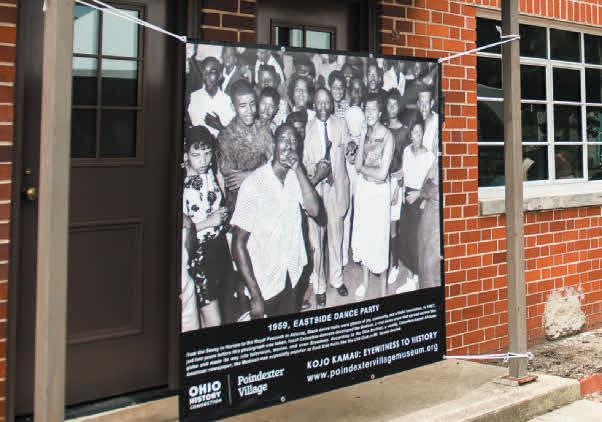
Presidential History Book Club
WEDS., MARCH 29 & APRIL 26
NOON–1 P.M. Hayes Presidential Library & Museums, Fremont, and Online—Attend from Anywhere! 4 Read and discuss books about the presidency at this free book club. Bring your lunch if you’d like.
MARCH 29: The Monroe Doctrine: Empire and Nation in NineteenthCentury America by Jay Sexton.
APRIL 26: Louisa: The Extraordinary Life of Mrs. Adams by Louisa Thomas. This event will take place in person and online. For online login information, contact historian Dustin McLochlin at dmclochlin@rbhayes.org 800.998.7737 or rbhayes.org
Fisk Jubilee Singers Concert
SUN., APRIL 2 • 3 P.M. Grace Lutheran Church, 705 W. State St., Fremont 4 Hosted by Hayes Presidential Library & Museums 4 See page 6.
Hayes Easter Egg Roll
SAT., APRIL 8 • NOON–2 P.M. Hayes Presidential Library & Museums, Fremont 4 Kids are invited for an afternoon of fun replicating the annual White House Easter Egg Roll that President Hayes started in 1878. Bring three hard-boiled, colored eggs to use in egg games on the lawn. Ages 3 to 10 may also bring a pre-decorated egg to enter in an egg-decorating contest. The Easter Bunny will be on hand for photos with kids. If the weather is inclement,
egg games will be canceled; some activities will move into the museum. Free. 800.998.7737 or rbhayes.org
FEATURED EXHIBITS • • •
Mustering Memory—160 Years of Saluting the Civil War
ONGOING THROUGH APRIL 30 • VISIT RBHAYES.ORG FOR DAYS AND HOURS
Hayes Presidential Library & Museums, Fremont 4 From the aged veterans who walked on the fields of Gettysburg to commemorate its 50th anniversary in 1913, to modern enthusiasts who use vacation time reliving famous battles or scouring Civil War antique shows, this exhibit explores the history of how people have chosen—and still choose— to remember the Civil War. Featuring items from Hayes collections, the exhibit also shares information about Civil War reenacting and memorabilia collecting. 800.998.7737 or rbhayes.org
SOUTHEAST OHIO
SOUTHEAST OHIO
REGION 9
Ohio History Day Contest
SAT., MARCH 4 • 8 A.M.–4 P.M. University of Rio Grande, Rio Grande Counties: Athens, Gallia, Hocking, Jackson, Lawrence, Meigs, Pike, Ross, Scioto and Vinton. 740.245.0593, dmoore@galliavintonesc.org , gdaniels@galliavintonesc.org or ohiohistoryday.org
20 Echoes | MARCH & APRIL 2023
COLUMBUS, APRIL 29
ZANE GREY FAMILY DAY, NORWICH, APRIL 29
NORTHWEST OHIO
Women in the Workplace

REGION 10
Ohio History Day Contest

SAT., MARCH 25 • 8 A.M.–4 P.M. Muskingum University, New Concord Registration & Submission Deadline: Fri., March 17 | Counties: Belmont, Coshocton, Guernsey, Monroe, Morgan, Muskingum, Noble, Perry and Washington. historyday@ohiohistory.org or ohiohistoryday.org
Gallipolis Pharmacists, Pharmacies and Pharmaceutical Bottles
SAT., APRIL 1 • 9:30 A.M.–4 P.M. Bossard Memorial Library, 7 Spruce St., Gallipolis 4 Hosted by Our House Tavern Museum 4 Attend this daylong program to learn about local pharmacists and pharmacies in history and see Heath Jenkins’ collection of vintage pharmaceutical bottles made in Gallipolis. Free. 740.446.0586
Zane Grey Family Day
SAT., APRIL 29 • 11 A.M.–4 P.M. National Road & Zane Grey Museum, Norwich 4 Enjoy music by Barefoot McCoy, outdoor activities for children, a rousing game of old-fashioned base ball between the Ohio Village Muffins and the Zane Greys, along with a special 50th anniversary program with prior directors of the museum. 800.752.2602 or ohiohistory.org/nationalroad
POWER OF VOICE SERIES
19th-Century Women— Domestic or Discontented? J
WEDS., MARCH 1 • 7–8:30 P.M. Walnut Hills Branch Library, 2533 Kemper Lane, Cincinnati, and Online— Attend from Anywhere! 4 Hosted by Harriet Beecher Stowe House, Cincinnati 4 Praise for the “True Woman” by Catharine Beecher, her sister Harriet and many others in the 19th century sought to elevate the status of women by celebrating their roles at home as wives and mothers, but this ideal was often used to confine women to subservience at home and deny them freedom outside it. For Women’s History Month, we’ll consider three 19th-century women authors to see how the stories they tell reflect on the ideal of the True Woman and also speak to our time. Free with required advance registration. 800.847.6507 or stowehousecincy.org
OHIOHISTORY.ORG 21
YOUNGSTOWN HISTORICAL CENTER OF INDUSTRY & LABOR, MARCH 16
Ohio History Connection Archival Collections Leave a Legacy Passionate about preserving history for future generations? Consider including the Ohio History Connection as a beneficiary in your estate plans. Our staff can help you choose options that best fit your needs. Call 800.647.6921 to learn more.
SOUTHWEST OHIO
March is Women’s History Month. Follow the Star J to Women’s History Month programs in this issue of Echoes Magazine. membership@ohiohistory.org 800.686.1545 Questions about your membership? Need to update your address? We’re happy to help! Our Membership Office is here for YOU! YOU! Read Echoes Magazine online anytime. Visit ohiohistory.org/ memberechoes and enter your member number.
SOUTHWEST OHIO
Walking Tour
Maple Syrup
SAT., MARCH 4 • NOON–4 P.M. Fort Ancient Earthworks & Nature Preserve, near Oregonia and Lebanon In this practical class with Keith Bengtson of Fort Ancient, learn about Native, colonial, traditional and modern techniques of making maple syrup, with stations focusing on each approach. See tools ranging from birch-bark buckets to modern pipeline systems. We’ll compare historic and modern methods, boiling down sap in both a cast-iron kettle and a stainless-steel evaporator. Please dress comfortably for this outdoor program. $7, $6/senior or student, Free/Ohio History Connection member. 800.283.8904 or ohiohistory. org/fortancient
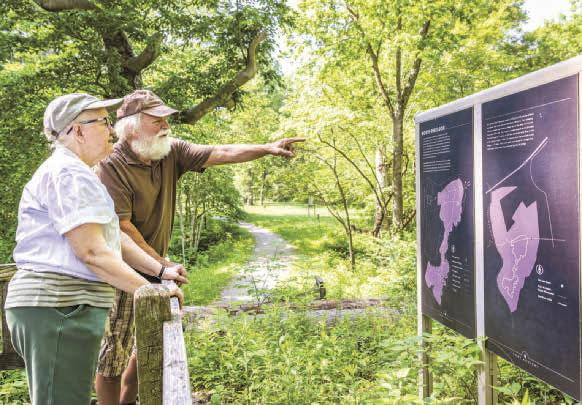
Hard Hat Tour
SAT., MARCH 11 & APRIL 22
11 A.M.–NOON

Harriet Beecher Stowe House, Cincinnati 4 The Harriet Beecher Stowe House has evolved significantly over nearly 200 years. What are we uncovering during the restoration of this historic site? Join volunteer Eric Driscoll to explore behind the scenes and get the latest updates. As the unique multi-era restoration continues, we’re uncovering new questions and answers every week. Participants must be able to navigate narrow and/or steep staircases. $12, $5/Ohio History Connection member. Advance registration required. 800.847.6507 or stowehousecincy.org
REGION 8
History Day Contest
SAT., MARCH 18 • 9 A.M.–5 P.M. Cincinnati Museum Center, Cincinnati
Registration Deadline: March 1 |
Submission Deadline: March 3 | Counties: Adams, Brown, Butler, Clermont, Clinton, Hamilton, Highland and Warren. 800.686.6124, 513.287.7000 ext. 7201 or ohiohistoryday.org
Fort Ancient Walking Tour
SAT., MARCH 25 • 10:30 A.M.–12:30 P.M.
Fort Ancient Earthworks & Nature Preserve, near Oregonia & Lebanon
Take a walking tour of Fort Ancient Earthworks & Nature Preserve with Education Specialist Pam Hall. Get an overview of its archaeological history and learn about the ingenuity American Indians employed 2,000 years ago to build what is now the largest and best-preserved ancient hilltop enclosure in the United States. Please dress comfortably for this outdoor program. $7, $6/senior or student, Free/Ohio History Connection member. 800.283.8904 or ohiohistory.org/fortancient
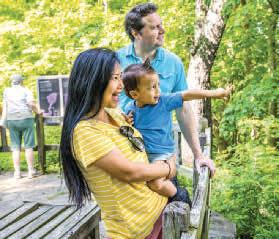
BOOK DISCUSSION
The Women of Robertson Place J
SUN., MARCH 26 • NOON–1 P.M. Adena Mansion & Gardens, Chillicothe
Join local author Lynn H. Carden for a discussion about her book The Women of Robertson Place: A Family Saga, a sweeping history of eight generations who lived within two miles of one another in Southern Ohio. Free. 800.319.7248, info@ adenamansion.com or adenamansion.com

22 Echoes | MARCH & APRIL 2023
FORT ANCIENT EARTHWORKS & NATURE PRESERVE, MARCH 25
NOW ON EXHIBIT 800.686.6124 ohiohistory.org/wonders TEXT “OHIOHISTORY” to 44-321 ONLINE ohiohistory.org/give SCAN MAIL OHIO HISTORY CONNECTION 800 E. 17th Ave. Columbus, OH 43211
State History Day Contest
POWER OF VOICE SERIES George Harris’s Voice in the Slavery Debate
WEDS., APRIL 5 • 7–8 P.M.
Walnut Hills Branch Library, 2533 Kemper Lane, Cincinnati, and Online—Attend from Anywhere! 4 Hosted by Harriet Beecher Stowe House, Cincinnati 4 Today it’s easy to wonder how anyone could seriously defend slavery, but in the antebellum U.S., plenty of people did just that. We’ll look at how one Southerner, George Fitzhugh, tried to make the case. In contrast, we’ll consider how effectively two moments of self-expression by George Harris in Uncle Tom’s Cabin anticipate and counter Fitzhugh’s arguments. We’ll also consider the lights this debate shed on controversial issues in the U.S. today. Free with required advance registration. 800.847.6507 or stowehousecincy.org
Animals from Bark and Natural Objects
SAT., APRIL 15 • 10:30 A.M.–12:30 P.M. Fort Ancient Earthworks & Nature Preserve, near Oregonia & Lebanon Use bark and other natural objects plus glue, paint and mixed media to create 3D realistic or fantasy animals, birds and insects. Advance registration required. $5 supply fee + regular site admission: $7, $6/senior or student, Free/Ohio History Connection member. 800.283.8904 or ohiohistory.org/ fortancient
Health by Design— How Infectious Disease
Shaped the American Home
SUN., APRIL 16 • 4–5:30 P.M. Walnut Hills Branch Library, 2533 Kemper Lane, Cincinnati, and Online—Attend from Anywhere! 4 Hosted by Harriet Beecher Stowe House, Cincinnati Much of our built environment was specifically designed to avoid the spread of diseases such as cholera, influenza and tuberculosis. Journalist Elizabeth Yuko connects the early home-design writing of Catharine Beecher and Harriet Beecher Stowe to the impact disease and pandemics have had on home design today. Free with required advance registration. 800.847.6507 or stowehousecincy.org
SEMI-COLON BOOK CLUB
The Doctors Blackwell J
SAT., APRIL 22 • 10–11 A.M. Walnut Hills Branch Library, 2533 Kemper Lane, Cincinnati, and Online—Attend from Anywhere! 4 Hosted by Harriet Beecher Stowe House, Cincinnati Learn how two pioneering Cincinnati sisters, Elizabeth and Emily Blackwell, brought medicine to women and women to medicine. In 1849, Elizabeth became the first woman in America to receive a medical degree, soon followed by her younger sister, Emily. Join in a discussion of The New York Times bestseller The Doctors Blackwell: How Two Pioneering Sisters Brought Medicine to Women and Women to
Regional History Day Contests
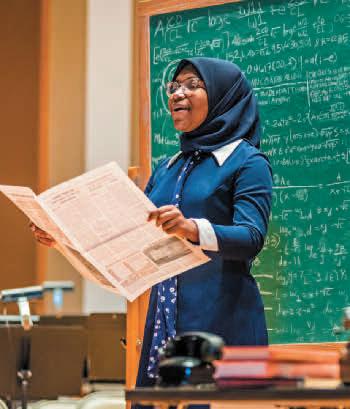

Medicine, by Janice P. Nimura, led by Desiree Willis, member of the Friends of Harriet Beecher Stowe House. Free with required advance registration. 800.847.6507 or stowehousecincy.org
Wildflower Discovery Tour
SAT., APRIL 29 • 10:30 A.M.–12:30 P.M. Fort Ancient Earthworks & Nature Preserve, near Oregonia & Lebanon
Enjoy the outdoors and learn about early spring flowers and plants on this annual hike through the woods and prairie at Fort Ancient with Rick Hoffman and other Ohio Certified Volunteer Naturalists. Included with site admission: $7, $6/senior or student, Free/Ohio History Connection member. 800.283.8904 or ohiohistory.org/ fortancient
FEATURED EXHIBITS • • •
Four Special Exhibits
WEDS.–SAT. 9 A.M.–4 P.M. National Afro-American Museum & Cultural Center, Wilberforce 4 On exhibit: African Americans Fighting for a Double Victory; Queens of the Heartland; and Rhythm of Revolution. Opening April 22 : African Art—Form, Function and Fraught Histories. Included with museum admission: $6, $5/ senior, $3/ages 6–17, Free/Ohio History Connection member or age 5 & under. 800.752.2603 or ohiohistory.org/ naamcc
OHIOHISTORY.ORG 23
OHIO WESLEYAN UNIVERSITY, DELAWARE, APRIL 22
MARCH 4–APRIL 1
March is Women’s History Month. Follow the Star J to Women’s History Month programs in this issue of Echoes Magazine.

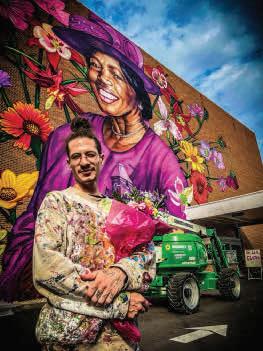


24 Echoes | MARCH & APRIL 2023
Mural artwork is by Gaia. Photographs of Springfield's Hattie Moseley mural are courtesy of the photographer, Spyder Booshemi.
Honoring an Activist Thoroughbred
Despite the bigotry that infected America in the early 1900s, Clark County’s African Americans…produced unsung heroes who stood up to intolerance.”—From In the Shadow of Prejudice, an exhibit in the Clark County Historical Society’s Heritage Center.
When she arrived in Springfield in 1922, Hattie Moseley (1896–1965) was four years older than the century. That’s the same number of years her father, likely born in slavery, spent in a hard labor prison in Georgia before he died, leaving his wife widowed and Moseley orphaned.
Because there’s no historical record of it, we can’t know whether it was the blunt-force trauma of the Peach State’s codified segregation or her specific experience in Georgia schools that led Moseley to act. But she joined the picketing when Fulton School opened as an allBlack elementary the year she arrived in Springfield.
A TUMULTUOUS TIME

What we do know—and what Kevin Rose, historian for Springfield’s Turner Foundation, told the crowd at the dedication of a mural in Moseley’s memory on a cool, sun-drenched morning in October 2022—is this: “She walked right into one of the most tumultuous periods in Springfield history.”
And the nation’s.
The year before her arrival, Mayor Burton Westcott, who lived in a Frank Lloyd Wright-designed house, called in the Ohio National Guard to quell an anti-Black riot in Springfield. The Clark County community was not unique in doing that, Springfield attorney Darnell Carter observed in a master’s thesis on the riot that earned him a master’s degree in history at The Ohio State University.
“From June through December 1919,” he writes, “76 blacks were lynched, and there were 25 (anti-Black) riots” in the nation. It was, Carter says, “the largest nativism movement in American history (during which) white native-born Americans openly demonstrated resentment towards Jews, Catholics, immigrants and Blacks.” And demonstrated it clearly.

OHIOHISTORY.ORG 25
SPRINGFIELD’S HATTIE MOSELEY MURAL BY TOM STAFFORD
ARRIVAL OF THE KLAN
No organization was more associated with the spread of bigotry than the one that followed African Americans north during The Great Migration. The Ku Klux Klan was glorified on the silver screen in the 1915 D.W. Griffith movie The Birth of a Nation—a film in which some Springfielders took special pride because it starred Springfield-born Lillian Gish as a maiden rescued from Black men by Klan members on horseback.
An Ohio History Centra l entry on the Ku Klux Klan tells us that in the early 1920s, the Klan was wellensconced in Ohio. It claimed to have 50,000 members in Akron and Summit County, making it the largest local chapter in the United States. It also had a strong presence in Indiana, also a destination for Blacks fleeing the oppressive South.
Although segregation was and remains the Klan’s stock-in-trade, it isn’t clear whether Moseley saw the Klan’s fingerprints on the plan to segregate Fulton.
As an article from Clio: Your Guide to History shows, there was reason for uncertainty.
“African American leaders and teachers...gathered up support and signatures for a Black elementary school where they would employ African American teachers.” The obvious benefits would be having teachers attentive to the needs of the students and members of the Black community employed as teachers.
AN EVERLASTING MORAL DETRIMENT
But even African Americans who supported the allBlack school with all-Black teachers said publicly that while offering “temporary financial and political benefit,” segregation would become an “everlasting moral detriment to the entire community” if made permanent.
The NAACP and its Civil Rights Protective League decided it unwise to risk that and ultimately fought against the school’s segregation with two timehonored techniques: public protest and legal action The Clio reports the dual results.
“Fierce picketing began across the street from the school while many parents held their children back from the school for over two months. While over 250 African American students were assigned to the school, the daily attendance was less than 50.”
The League also “secured a court injunction, as Ohio’s laws did not support the creation of racially segregated schools.”
But victories were short-lived.
“In response, the school board fired all of the Black teachers who had been hired rather than permit Black teachers to work at a school that included both white and Black students.”
A RAID
In an era stacked against them, protesters had run into a brick wall even bigger than the one on which Moseley’s mural has been painted.
And Thursday, Feb. 25, 1923, the other shoe dropped when the Springfield Daily News reported that, acting on information gathered by a private investigator, Police Chief R.E. O’Brien ordered a raid on the Klan offices on Fountain Avenue and arrested Kleagle W.A. Cortner.
Cortner told reporters the Klan stood for “just plain Americanism” and warned even the chief about challenging it locally. That day’s edition listed the names of 681 local members, among them School Superintendent George E. McCord and two board of education members.

DE FACTO SEGREGATION
Although de facto segregation would continue, Moseley’s portrait is on that wall largely because, despite the result at Fulton, she never gave up the struggle.
Even while organizing the Fulton picket line, she was pursuing a strategy always used in the longterm effort to fight discrimination.
26 Echoes | MARCH & APRIL 2023
The initiation of a Klan class of 300 “somewhere in Clark County” in April 1923.
Clark County Historical Society
As Rose told those at the dedication: “She was working to register specifically Black women to vote…who had just gained the right to vote” in 1920 with the adoption of the 19th Amendment.
Moseley, described by her surviving grandnieces as being “firm…firm…very firm,” was remembered by those who worked with her in a February 1990 story by Springfield News-Sun reporter Bill Monaghan.
“She was a self-educated lady, a nice lady, a churchgoing lady,“ Lewis Browning told Monaghan, “but she stood right up to those people downtown. No telling how far she would’ve gone if she had been educated formally.”
“Anywhere something was wrong, she tried to straighten it out and get people involved,” said Mary Richardson, the wife of Moseley’s pastor. “She’d go out to (the) Need More (neighborhood), get people in her Chevrolet car and take them into the Board of Elections to register.”
AN ACTIVIST THOROUGHBRED
Hazel Hillman called Moseley “an activist thoroughbred for the South End. And while in the midst of her campaigns, a lot of people said, ‘she shouldn’t do that’…when she accomplished things, she would get a lot of praise.’’
“Anyone she thought was worthy, she’d get them placed in working conditions as far back as 1936,” said Ruth Henderson. “That’s when she got me a job with the state highway department.”
Henderson said Moseley also was the go-to person for seniors who needed food or clothing and for seniors who couldn’t read or write and needed help filing for their pensions.
The way she helped individual people with their challenges underscores the personal toll of discrimination on people’s lives and how, in addressing it, Moseley became “legendary in the African American community,” Springfield resident Herschel Miller said at the mural dedication.
‘MISS HATTIE’
Patty Young, who also attended the event, had her life touched by Moseley.
“Miss Hattie used to come in my mother’s beauty salon. She would be talking about what’s going on in the city and women voting. Everybody was quiet to listen to what Miss Hattie had to say.”
Young and sister Debbie Woods subsequently saw what Miss Hattie could do. “I remember sitting in Woolworth’s in a booth, and we were not served. They told us we could only be served at the counter. Me and Debbie were little girls. And we left.”
After Moseley mounted protests against the practice, the two were better-served—as was the community.
Unaware that a mural of Moseley had been in the works, Young says Gaia’s brilliantly colored portrait “just blew me away” the day she happened across it in a drive downtown.
To her, honoring Moseley in such a way “just shows you that times change.”
It also is a reminder of how.
Tom Stafford spent 35 years as a reporter at the Springfield News-Sun, 20 of those writing more than 1,000 local history stories for weekly publication. In retirement, he continues to write a Sunday column for the paper and does freelance reporting for WYSO in Yellow Springs.

LEARN MORE
Springfield historian Kevin Rose leads a series of educational tours in Springfield including his Liberty District Walking Tour. He invites all to join him. “From the 1870s to the 1980s, the Liberty District was a vibrant African American neighborhood filled with schools, churches, theatres and locally owned businesses. Join us to discover this neighborhood’s remarkable and, at times, tumultuous history, including stories of civil rights leaders Hattie Moseley and Dorothy Bacon, boxer Davey Moore and the fight for Fulton School. This tour is offered through the Westcott Center for Architecture + Design.” Visit kevinrose.org
Read Rose’s short biography of Hattie Moseley (as well as the text to the historical marker dedicated in her honor) at the Springfield Foundation’s Women’s Partnership Funds website at ohiohistory.org/Hattie1
The Hattie Moseley mural is on the east side of the WesBanco Bank building at 28 E. Main St. in downtown Springfield.
OHIOHISTORY.ORG 27
LEARN MORE
Gaia
MURALIST WHO MAKES WALLS TALK ALSO WALKS THE HISTORIAN’S WALK
The street artist Gaia has spread murals over walls of all six habitable continents of the world. Last fall, the New York-raised artist, whom Forbes listed in 2015 among its 30 Under 30 in Art and Style, spent a fortnight in Springfield. He first researched, then created a shining four-story-tall tribute to local civil rights activist Hattie Moseley, who picketed against school segregation in the city in 1922. The Springfield Public Art Committee commissioned his work with the goal of sharing the stories of underrepresented communities, a field in which Gaia specializes.
The committee funded the project with $30,000 in grants from the Institute of Museum and Library Services and the Ohio Arts Council and asked WesBanco, owner of the building, for the use of its wall, to which it readily agreed. The mural’s anticipated life is 30 years.
The night before his mural was dedicated—with the nearly finished image of Moseley looking on— the artist talked with Echoes Magazine writer Tom Stafford about art and history of the most local kind.
This is what he shared.
EDITOR’S NOTE: Marta Wojcik heads the Springfield Public Art Committee, and Kevin Rose is the historian at Springfield’s Turner Foundation. Every place is extremely specific and has so many different mythologies, narratives, stories that have determined it and are competing with one another. And so I’m just trying to always promulgate a kind of awareness for that local-ness, while also not falling into the tropes of some of the more traditional history-telling methodologies.
When I’m making public artwork, it really follows a People’s History perspective: Labor, Black history, civil rights, resistance to slavery, resistance to colonialism, indigenous identity, Indian law—and then, obviously, nation-building. But from the perspective of those who have actually built this country.
PROCESS ART
When Marta (Wojcik) originally reached out to me in the spring of 2022, we had roughly seven months of planning prior to developing legal language, but also talking about the process. I had proposed
having some sort of committee that could serve as a workshop for developing ideas and concepts and then really understand what would be the most relevant. And so that’s how we ultimately arrived at Hattie Moseley.
INTIMATE CONNECTIONS
In my early research, I had encountered a lot of work that Kevin Rose had written online, and I had, funnily enough, asked Marta to connect me to him, thinking he was possibly a professor. I didn’t realize he was a young, enthusiastic historian or that he was her husband.
Kevin had a connection already established with one of the Moseley family members, and that was extremely important. Mural art is a great opportunity for…propagating ideas around civil rights and society. But there are plenty of people who don’t want to participate. That has to be respected, and there’s no real way to really gauge that without talking to the people.
HISTORY IN A FORTNIGHT
This project took two weeks: four days of planning and 10 days straight of painting. This composition was developed by acquiring a relatively good photograph of Hattie Moseley in her later years in some sort of intimate household setting—so not wearing a church dress or her Sunday best. But the face was really good. And then we asked a living relative who came to the stakeholder meeting with the family, and her sister was game to model. So I could pose her body in high resolution and then, in Photoshop, collage the portrait onto that.
But the family in the South wanted the outfit to be more formal. So, I redrew it into a blazer suit from a family member’s wardrobe. The hat is actually reflective of her newspaper illustration portrait, which has quite a broad brim. What you’re seeing is a composite of four different images, all tied together so it looks very realistic.
BRINGING HER ALIVE
There are certain strategies and tactics for painting portraits that really liven them up. In that photo, her pupils don’t have that gleam that appears in the mural, but you can paint a classic pupil and just add the highlight in the direction of the light. Because it was a flash photograph, there is a directional light coming at her. Painting the teeth and highlights and the nose and cheek—you just kind of make them a little bit more plump.
28 Echoes | MARCH & APRIL 2023
THE BACKDROP
Every wall is completely different. This is a massive, rectangular, large, uninterrupted— no windows, no fenestration. There’s nothing besides a small bank sign, so to totally prime that would require just so much paint. It didn’t make any sense. And because it’s raw red brick I wanted to retain some of that.
FLOWERS ON THE WALL
In a mural, it always looks really nice to treat the flora as if they’re a kind of wallpaper. These are all things that would naturally grow in Ohio if you just let them. Most notably, the red columbine. I don’t know its Latin categorical name, but Colorado has the purple lavender columbine. Then you have cosmos, which grow everywhere and are gorgeous. They’re like little explosions in the ground. Everything is very local to Ohio.
UP AGAINST THE WALL
Once we’ve developed the digital collage, then we trace it out with spray paint, then it gets hand-primed with a masonry primer in the design shape. Then we finally spray a layer of latex paint super thick on top of the primer. You detail on top of that with the spray paint. And by sticking with spray all in the end process, it’s able to go a lot faster.
ARTIST PREFERS NOT TO STARVE


It’s been a spectacular project. The budget has been really good. So if I’m ever asked to do anything extra, you know, add another day or two of design work on the tail end just to make sure everyone is very happy with the conclusion—it’s all well worth it. When I have worked in the past, I’ve had a very catholic kind of perspective on street art and have given a lot of myself to communities without much in terms of monetary return. It’s sort of a suffering through compassion. It’s nice to finally ask for the budgets that I need, have them be comfortable and then just simply be able to perform.
—Tom Stafford
OHIOHISTORY.ORG 29

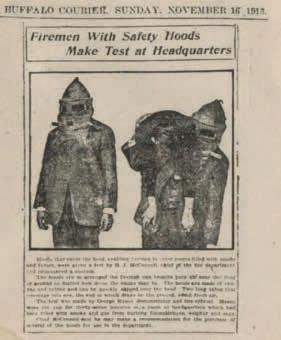
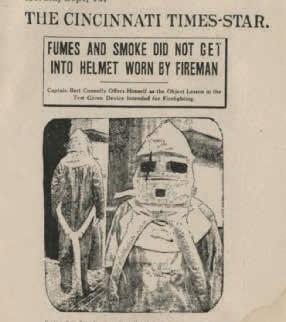

30 Echoes | MARCH & APRIL 2023
Top left: Garrett Morgan displays a medal he was awarded.
Top right: Newspaper coverage of Morgan’s gas mask demonstrations ran across the country, including Cincinnati and Buffalo. Bottom: Members of a fire brigade pose with a horse-drawn wagon, two of them wearing Morgan's gas masks.
Garrett Morgan
 CLEVELAND ’ S UNSTOPPABLE INVENTOR BY BRITTANY MOSELEY
CLEVELAND ’ S UNSTOPPABLE INVENTOR BY BRITTANY MOSELEY
When Joan DiCicco set out to write a children’s biography, she knew she wanted to write about someone she’d never heard of. While searching through an old anthology of early-20th-century inventors, she came across a paragraph about Garrett Morgan.
“He was the only one who was described as a ‘hero inventor,’ and it rather piqued my curiosity,” DiCicco says. “The more I dug into who he was and learned about him, the more fascinated I became, and I was convinced that I’d just found my biography candidate.”
In 2019, DiCicco’s children’s book The Unstoppable Garrett Morgan was published. Kirkus Reviews called it “a stirring tribute to Black excellence.” However, that same review says Morgan was “often overlooked in favor of other famous Black innovators.”
The son of former slaves, Morgan was born in 1877 in Kentucky. At 18, he moved to Cleveland. During his lifetime, Morgan fought for recognition, most notably for his role in the 1916 Cleveland Waterworks Tunnel disaster. Four years before the tragic event, Morgan patented his “Breathing Device,” a precursor to the gas mask replete with a safety hood to protect the wearer from smoke and ammonia.
A HERO SHUNNED
The July 1916 Cleveland Waterworks Tunnel disaster was caused by a natural gas explosion and killed 21 men, including workers and rescuers. In a 2016 Cleveland Plain Dealer article about the 100th anniversary of the disaster, Roxanne Washington wrote that a Cleveland policeman who’d seen a demonstration of Morgan’s device persuaded local authorities to call the inventor. “Morgan, his brother and two volunteers made four trips to remove men, dead and alive, from the tunnel,” Washington wrote. Of the six men Morgan rescued, two lived.
For years, Morgan received little recognition for his role. In an October 1917 letter to then-Cleveland Mayor Harry Davis, Morgan accuses the mayor of depriving him “of the rewards which my work has merited, in connection with the recent Lake Erie Tunnel disaster.”
All images courtesy of Western Reserve Historical Society, Cleveland, Ohio.
OHIOHISTORY.ORG 31
He goes on to ask why the mayor chose to remain silent when the Carnegie Hero Fund Commission gave awards to other men who assisted with the tunnel rescue but not Morgan. Many wrote to the Carnegie Hero Fund Commission in support of Morgan, including the Cleveland chapter of the NAACP and the director of public utilities. In a January 1917 letter, the manager of the commission wrote that “while the act performed by Mr. Morgan is commendable, from the facts at hand it does not appear that it was attended by any extraordinary risk to his own life.”
“It was prejudice, if I’m being perfectly honest,” says Sandra Morgan, the granddaughter of Garrett Morgan. “They were hesitant to recognize an African American man as having played such a key role in the rescue and retrieval of those men and of the bodies. There were other men there who would have, I think, resented his being called out above them for obvious reasons.”
A BLOSSOMING INVENTOR
Morgan worked as a sewing machine adjuster. During this time, an accidental discovery led to one of his early inventions: a solution to straighten hair. An article from the February 1946 edition of New Vistas recounted the discovery.
“Mr. Morgan was experimenting at his home with a solution to use on the machine needles when a hurried call to dinner caused him to wipe his hands on a bit of wiry pony fur cloth that was laying around. When he returned from dinner, Morgan noticed that the wiry fuzz of the cloth where he had wiped his hand was quite straight.”
A STRING OF SUCCESSES
The early 1900s included a string of successes for Morgan. In 1907, he started a business repairing and selling sewing machines. Two years later, he opened a clothing store. In 1913, he founded the G.A. Morgan Hair Refining Co. “Look 40 at the age of 60 by useing [sic] G.A. Morgan’s harmless black oil hair stain” reads one of Morgan’s business cards.
“In many ways, his story was unique, and yet it’s also representative of the American dream,” author DiCicco says. “He started with pretty much nothing but his curiosity and his intellect and his drive and motivation. And from there, he proceeded to rack up patents for inventions and carve out a life for himself that was pretty unique at the time for an African American son of freed slaves.”
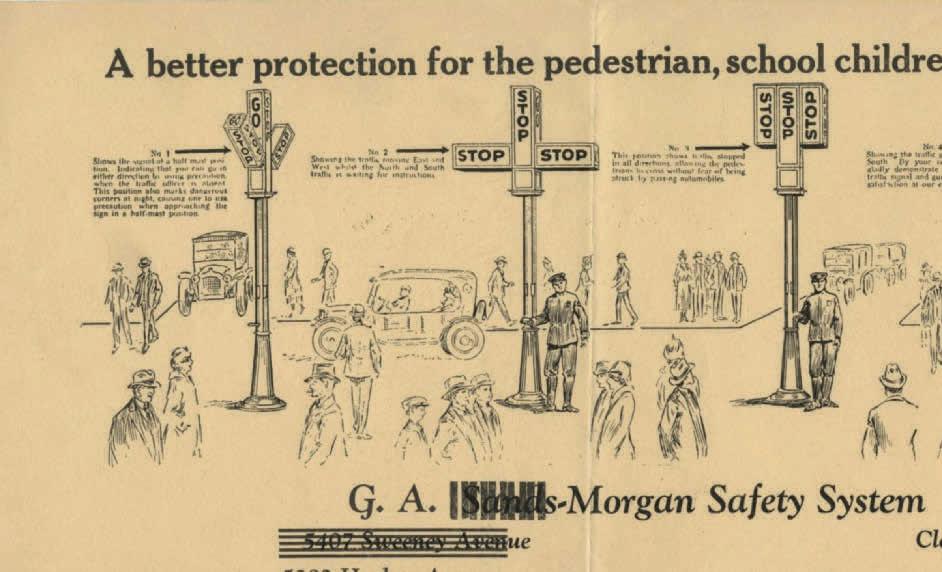
32 Echoes | MARCH & APRIL 2023
THE THREE-WAY TRAFFIC LIGHT
Perhaps the invention Morgan is best-known for is the three-way traffic light. The invention was notable because it included a third signal—the yellow caution signal—between stop and go. Morgan sold his traffic light patent to General Electric in 1923 for $40,000. Today, Morgan’s traffic light is on display at the Western Reserve Historical Society in Cleveland as well as at the National Museum of African American History and Culture in Washington, D.C.
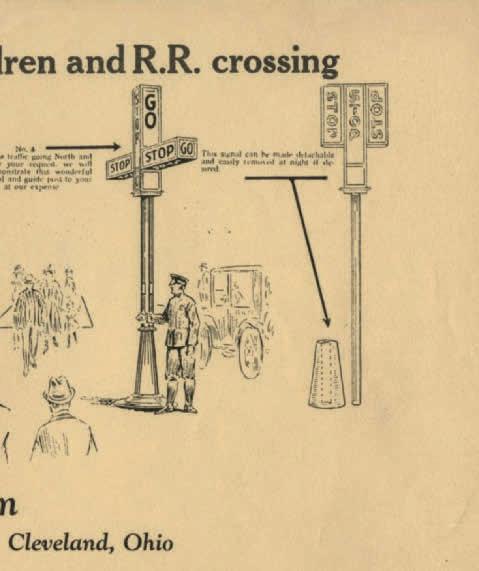
Morgan also had a great impact on Cleveland’s Black population. He founded the Cleveland Call newspaper in 1920. It later merged with the Cleveland Post to form the Call & Post, a Black weekly newspaper that’s still in print today. Morgan also co-founded the Cleveland Association of Colored Men. According to the Encyclopedia of Cleveland History, “the organization utilized negotiation and conciliation and stressed self-reliance, believing that demonstrations of upward mobility would eventually result in the acceptance of Blacks.”
Sandra was a baby when her grandfather died in 1963, but his presence loomed large in her family’s home, both physically—one of his traffic lights sat in their living room—and through her father, Garrett Morgan Jr. Growing up, Sandra says a popular question from her father was, “If (Garrett Morgan) could do that with a sixth-grade education, then what are you going to do?”

Today, Sandra is continuing to promote and share her grandfather’s legacy, a role she took on when her father passed many years ago. “Considering the times in which he lived and the adversity that he faced, he never let anything faze him. He was undaunted,” Sandra says.
“He used to say that you have three opportunities to get where you want. If there are roadblocks in your way, you can go over them, you can go around them or you can go through them. But either way, you should never be deterred in getting where you want to be.”
Brittany Moseley is a Clark County native and a graduate of Kent State University. She’s worked at magazines in Cleveland and Columbus. She’s a fulltime freelance writer and editor based in Columbus.
LEARN MORE
LEARN MORE
Case Western Reserve University’s Encyclopedia of Cleveland History has several entries on inventor and civic leader Garrett Morgan, including a biography, and entries about the Waterworks Tunnel Disaster, the Cleveland Association of Colored Men, Cleveland’s first traffic signals and the founding of the Call & Post. Visit case.edu/ech and type “Garrett Morgan” in the search box.
There are at least a dozen books about Garrett Morgan written for school-age children that are readily available online through your local library, including The Unstoppable Garrett Morgan by Joan DiCicco, Saving the Day: Garrett Morgan’s Life-Changing Invention of the Traffic Signal by Karyn Parsons and Gregory Christie, and Garrett Morgan by Maria Mas.
OHIOHISTORY.ORG 33
Left: Advertising sheet for Morgan's traffic-light system.


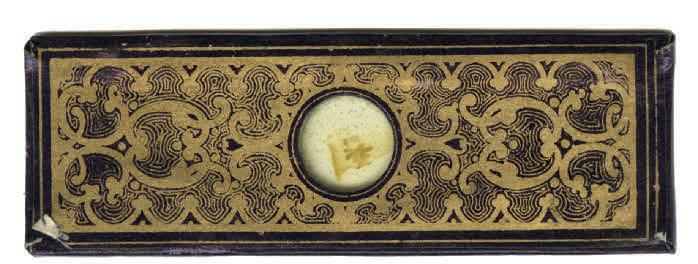
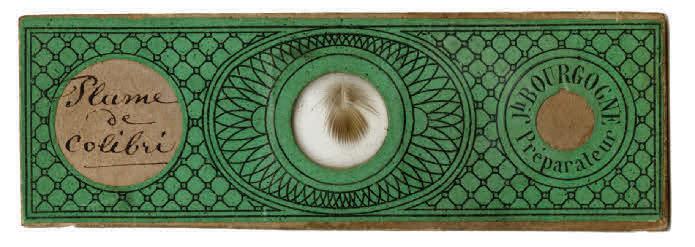

34 Echoes | MARCH & APRIL 2023
History Under the Microscope
WILLIAM SULLIVANT'S VICTORIAN MICROSCOPE SLIDES
BY DAVE DYER AND TIM FERAN
When Dave Dyer returned to the Ohio History Connection in 2013 as a curator after serving for 20 years in a similar position at the museum of the University of Montana in Missoula, he immediately saw many large things in the collections—things like mastodons and dire wolves.
But he was also struck by some of the smallest things in the collections—tiny specimens on glass microscope slides, ranging from the scales of a 1.5-millimeter arthropod called a water springtail to the ovipositor (egg-laying organ) of an ichneumon wasp.
Those specimens weren’t what piqued his curiosity, however. It was the slides themselves and their history that captured Dyer’s attention.
It all started when he noticed an unassuming, dark, wooden cabinet on the shelves. Dyer assumed the cabinet probably contained a microscope or other equipment from a previous curator’s lab. But when he opened one of the nine porcelainhandled drawers in the cabinet, he was amazed to find an array of very old and beautifully created microscope slides.

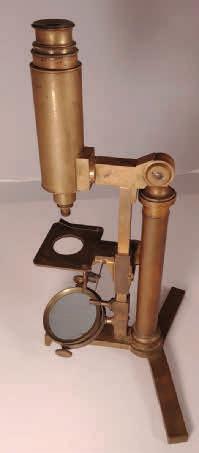
GLORIOUS DESIGNS, BRILLIANT COLORS
Most of the slides were glass and wrapped in paper with varying designs and color. At first, Dyer didn’t think there would be any way to accurately know the time period in which the slides were produced, or who made them. But as he looked at the slides more closely, he noticed that some of the wrappers had names on them. A quick internet search revealed who the makers were and where they worked, and showed examples of their distinct designs.
The easiest to track down were slides with the name of the slide preparator printed right on the wrapper. Paper wrappings on slides were first used to help hold down the cover slip—the small and very thin piece of glass that covers the specimen. The wrappers became more decorative over time.
OHIOHISTORY.ORG 35
All images courtesy of Ohio History Connection Archival Collections
The slides were amazing enough, but the best was yet to come. In one of the last drawers was a small, innocuous-looking, folded paper packet, a packet that Dyer might have overlooked had it not been marked with an old style of handwriting. What was even more intriguing was that the writing indicated that diatoms collected “in the run 3 miles west of Columbus” were contained in the packet.
CRUCIAL TO PHOTOSYNTHESIS
Diatoms are a type of one-celled algae found in marine and freshwater environments and have beautifully formed cell walls made up of silica. They’re significant for several reasons, not the least of which is that diatoms carry out one-fifth or more of the photosynthesis on Earth—the process that uses sunlight, water and carbon dioxide to create life-giving oxygen.
What made this small packet of diatoms even more interesting was that it was an early sample, collected in 1857—and the initials written toward the bottom were “W.S.S.”
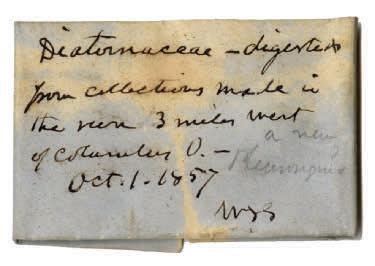
That rang a bell.
Dyer had read recently that Lucas Sullivant, the founder of Franklinton—a historic neighborhood just west of downtown Columbus—was a well-known naturalist in his time, and that one of his sons was an internationally known botanist and a specialist in studying diatoms.
The son’s name? William Starling Sullivant, the W.S.S. on the packet.
The oldest son of Lucas and Sara (Starling) Sullivant, William was born in 1803 in Franklinton. He wrote major works on botany, including A Catalogue of Plants, Native or Naturalized, in the Vicinity of Columbus, Ohio in 1840 and The Musci and Hepaticae of the United States, East of the Mississippi River in 1856.
In the Ohio History Connection’s collections is an original copy of the younger Sullivant’s major contribution on mosses of the Allegheny Mountains, titled Musci Alleghanyenses. The work, with text entirely in Latin, consists of actual plant specimens— glued on pages in the two bound volumes—that Sullivant collected on an 1843 trip with Asa Gray, a Harvard University professor who’s considered the “Father of American Botany.”
AN INTERNATIONAL EXPERT
Sullivant eventually became known around the world as an expert on North American mosses and their relatives. His major works in botany were published from 1840 to 1856, which is concurrent with the time in which European slide makers were producing microscope slides commercially. He died in 1873.
In central Ohio, the name Sullivant remains familiar, from Sullivant Avenue in Columbus and from Sullivant Hall on the Ohio State University campus, which is where the Ohio History Connection’s museum was located before moving to its current location in 1970. Sullivant Hall, built in 1912–1913, was named in honor of Joseph Sullivant, William’s brother. Among other accomplishments, Joseph was a member of the first board of trustees of Ohio State from 1870 to 1878.
As Dyer researched the cabinet that housed the microscope slides, he found that it had been donated to the Ohio History Connection in 1928 by Elizabeth U. and Jane D. Sullivant, direct descendants of Lucas Sullivant.

36 Echoes | MARCH & APRIL 2023
A MICROSCOPE NEARLY 200 YEARS OLD
In addition to the microscope slides and specimen books belonging to William Sullivant, the Ohio History Connection has what curators believe is his microscope. It’s a brass instrument made in Paris sometime between 1830 and 1840, and may have been brought to America by Gray after the botanist had worked in Europe for a time (and visited with Charles Darwin). It’s known that Gray gave a microscope to Sullivant, and the accession record for the microscope states that it was the “First one used in Franklin Co., Ohio.”
When did Sullivant first use the microscope? Dyer believes that it was likely during a collecting trip in 1839 to Highland County, Ohio.
The trip was significant for reasons in addition to the first use of the microscope. It was during that trip that Sullivant discovered a small plant growing on the limestone cliff faces along Paint Creek. He didn’t recognize it, so he sent samples to Gray at Harvard and to John Torrey of Princeton University. It was indeed a new species, and Torrey and Gray named it as a tribute to William Sullivant: Saxifraga sullivantii.
WHAT’S IN A NAME?
Later it was realized the plant didn’t actually belong in the genus Saxifragia. So a new genus was created, Sullivantia, and it was given the species name “ohioensis,” which translates as “from Ohio.” Today it is known as Sullivantia sullivantii, with the common name “Sullivant’s Coolwort.”
Although rare, the plant is widely scattered across the Midwest, and is found only on moist sandstone and limestone cliff faces where the conditions are fairly consistent throughout the year.
“It’s a privilege to be able to see the plant specimens that William Sullivant personally collected, to peer through his microscope and to open the drawers of his microscope slide cabinet just as he did so many years ago,” Dyer says. “Museums allow us these opportunities, these glimpses into the past that otherwise would not be possible.”
Dave Dyer is a natural history curator for the Ohio History Connection.
Tim Feran is a native of Cleveland and a graduate of Harvard University. For more than 40 years, he’s been a professional journalist, first at the Lorain Journal, then for 30 years at The Columbus Dispatch and currently as a freelance writer. He lives in Columbus with his wife, Maryellen O’Shaughnessy, Franklin County clerk of courts.


Visit the website Historical Makers of Microscopes and Microscope Slides at microscopist.net.


Microscope slide collector

Howard Lynk calls his website (victorianmicroscopeslides. com/history.htm) “A Cabinet of Curiosities” and offers as a subtitle, “A Selection of Antique Microscope Slides from the Victorian Era c. 1830s–1900.” Of the microscope slides, Lynk writes, “While antique Victorian Microscope Slides may be considered a somewhat arcane or esoteric interest by many, the work and insights of the original makers…truly helped to lay the foundation of our modern world and culture.”
Several books have been written about the work of William Starling Sullivant, including “Noble Fellow”: William Starling Sullivant (1940) by Andrew Denny Rodgers III and Frontier Botanist: William Starling Sullivant’s Flowering-Plant Botany of Ohio (1830–1850) (1991) by Ronald L. Stuckey and Marvin L. Roberts.
OHIOHISTORY.ORG 37
LEARN MORE
LEARN MORE
Who Produced the Slides and the Microscope That Dave Dyer Found?
Some slides are from Joseph Bourgogne (1803–after 1879) of Paris. He began his slide production business in 1835 and was rated by his peers as the most important slide preparator of the 19th century. He won numerous awards at exhibitions in Paris and London, and his mounts were in demand from scientists all over the world.
Bourgogne had a unique design to his slide wrappers. Circular holes were cut in the top green wrapper, and the name of the specimen was written on the lighter colored under-wrapper underneath. This prevented having to use gummed labels, which could loosen and become lost over time. Two of Joseph’s sons, Charles (b. 1832) and Eugene (b. 1838), continued the family business and became noted for their high-quality slide preparations.

Conrad von Rappard (1805–1881) of Switzerland produced other slides. While the slide wrappers didn’t have the maker’s name, their distinctive wrapper was easy to match by comparing them to known slides on the internet. These slides, using a black wrapper with a gold pattern, were prepared under company names of August Menzel & Co. or Engell & Co., and most were produced between 1850 and the mid-1860s.
Von Rappard studied law from 1823 to 1827 and became a judge in several towns in Germany. In 1848, he was elected to the Frankfurt National Assembly, but the assembly was dissolved in 1849 and, due to von
Rappard’s political stance and involvement in several rebellions, a warrant was issued for his arrest.
He fled to London and later settled in Switzerland, where he pursued business interests in mining, hotels—and microscopy. He earned a Ph.D. in 1852 in Paris, studying a group of marine animals known as sea cucumbers. This helps explain why many of his slide mounts are of sea organisms.
The von Rappard slides are different from many others. Instead of having the specimen name written on the slides, each slide is labeled with a number. He sold slides to many different countries and included a printed list, ordered by number, in the correct language. The von Rappard slides in the Ohio collection have glued-on specimen labels which were probably added later by scientists who didn’t want to keep referring back to the printed list.
The microscope came from the John T. Norman microscopy business, which operated in London for 90 years, from its beginning by John Sr. in 1846 to the death of his son Alfred in 1936. The business was indeed a cottage industry, and operated entirely out of the family home. Five of Norman’s sons worked in the family business, most of them for many years. An 1868 advertisement gives the address of the business as 178 City Road, the site of Norman’s home and workshop for many decades. It’s now, ironically, the site of the Royal London Ophthalmic Hospital. Norman also dabbled in making microscopes and various other pieces of scientific equipment.
—Dave Dyer and Tim Feran
38 Echoes | MARCH & APRIL 2023




Funky Worm

THE OHIO PLAYERS AND THE BIRTH OF DAYTON FUNK
BY NANCY NALL DERRINGER
Acity that already gave the world the Wright Brothers, the cash register, Allison Janney, Erma Bombeck and peace in Bosnia can probably rest on its laurels for a while. But anyone who’s ever heard the opening guitar lick of Love Rollercoaster might wonder why the Gem City’s various boosters don’t have this on every billboard, chamber of commerce brochure, fun-facts roundup and pancake-house place mat in five counties: Birthplace of Dayton Funk.
For a few years in the 1970s, there was nothing better—a bottomheavy beat that bridged Motown-and-Memphis pop and disco, while folding in new technologies like ARP synths and vocoders. It was big bands, with horns and keys, platforms and bell-bottoms and Afros visible from the moon.
This year marks the 50th since Funky Worm, the Ohio Players’ breakout single, reached No. 1 on the Billboard R&B chart. It would be followed by six more Top 40 hits, including Love Rollercoaster, Fire and Skin Tight. And they were only the best-known of the Dayton bands. Lakeside, Zapp, Heatwave, Slave and others all hailed from southwest Ohio (along with legendary funk bassist Bootsy Collins, down the road in Cincinnati). What’s more, most stayed, at a time when a move to Chicago, New York or Los Angeles would have been easy, maybe even smart.
SO MUCH FUNKY GREATNESS
“We didn’t realize that much greatness was happening in the city of Dayton,” says its current mayor, Jeffrey Mims Jr., now 76 and a drummer in several less-successful bands around the same time. “That was a time when all of our high schools had a full band—marching, jazz, concert. Music in Dayton was like breathing the air.”
How Dayton funk came to be is a version of how the Motown sound was born in Detroit, or Chicago blues in that city—a stew that drew upon a Black population with Southern roots, music instruction in public schools and churches, and happy accidents between kids who knew one another from the neighborhood and classrooms.
“I grew up in a musical family,“ says drummer James “Diamond” Williams, the longest-lasting member of the Ohio Players, who are still touring. “Dad was a jazz fan; my mom played reeds. My high school band director
OHIOHISTORY.ORG 41
Top left: A Mercury Records publicity photo of the Ohio Players about 1977.
Courtesy of the Rock & Roll Hall of Fame
was my private teacher.” It wasn’t a straight path from the marching band to the Ohio Players, but it didn’t hurt to have a solid grounding in his instrument and connections in the small world of Dayton funk.
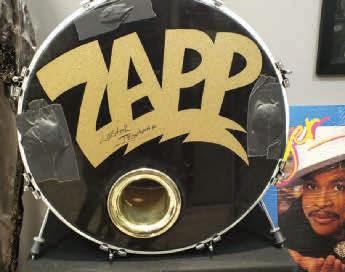



The Ohio Players brought to the table a strong independent streak, Williams says, and a sense that they knew what worked best for them.

“We were kinda headstrong,” he says. The music got people dancing, but they didn’t bother with stage choreography. They never had one singer, distributing vocal duties throughout the band. Also, very important: “We knew we weren’t the best-looking guys, so we put the great-looking women out front.“
Williams is referring to the Players’ famous—and infamous—erotic album covers. Three (Pain, Pleasure and Ecstasy) featured Patricia Evans, a model notable for her bald head, in a leather bikini, chains or other S&M accouterments. Honey put Ester Cordet, a Playboy Playmate of the Month, out front, dripping backlit amber suggestively into her mouth. It’s fair to say the covers sold records to listeners who may not have cared what was on the album inside.
Once they hit it big, the Players stayed close. Jeff Willis, younger brother of guitarist Chet Willis, remembers sitting on the front porch of his house on Wilson Drive when “the ugliest-colored Rolls-Royce I’d ever seen comes rolling down the street.“ Behind the wheel was
42 Echoes | MARCH & APRIL 2023
Dayton mayor Nan Whaley honored David R. Webb and the Funk Music Hall of Fame by declaring Aug. 27, 2016, as Funk Music Day.
Zapp drummer Lester Troutman’s kit on display at the Funk Music Hall of Fame.
Left: Leading members of Dayton funk bands The Young Mystics and Black Satin Soul formed Slave in 1975. The band signed to Atlantic Records subsidiary Cotillion in 1977, the year this publicity photo was taken. Right: Warner Brothers Records signed Zapp on the strength of the Roger Troutman demo More Bounce to the Ounce in 1979. Troutman (sitting, center) had success with Zapp and as a solo artist and record producer.
Courtesy of the Rock & Roll Hall of Fame
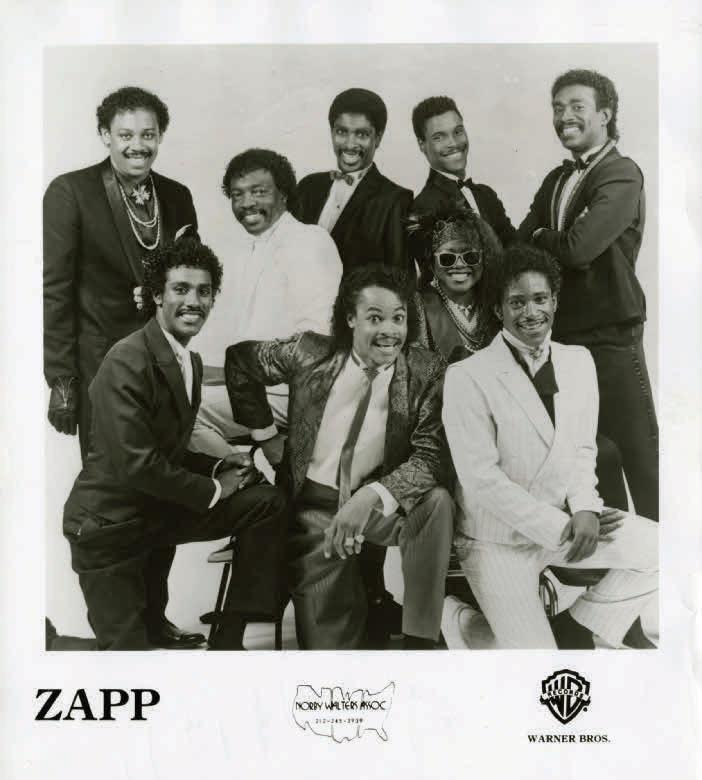




OHIOHISTORY.ORG 43
Left: Inside Dayton’s Funk Music Hall of Fame & Exhibition Center, formerly located at 113 E. Third St. in Dayton. The hall is currently negotiating a new location with the city of Trotwood. Center: Dayton brewery Warped Wing produced its Funk City red ale in honor of the city’s rich musical history. Right: A portion of Dayton’s Hillcrest Avenue was renamed Ohio Players Way in April 2021. The images in this strip were all provided courtesy of David R. Webb and the Funk Music Hall of Fame & Exhibition Center.
Courtesy of the Rock & Roll Hall of Fame
Junie Morrison, the band’s keyboard player and Funky Worm vocalist. What would have been a common sight in Los Angeles had real impact in Dayton.
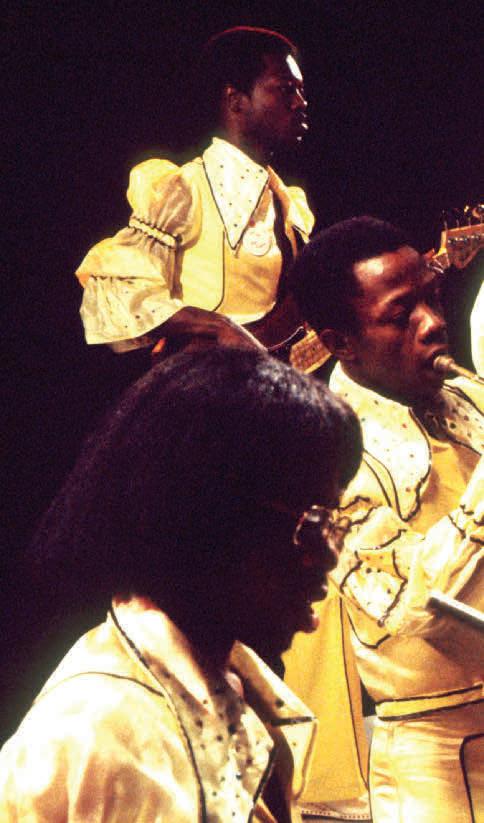
Jeff Willis never played in his brother’s band, but had his fingers in funk pies all over town, as a promoter and road manager, among other jobs. Like everyone else, he played a little—bass, mostly—and got “a chance to see and experience a lot of things the average young man didn’t get to experience.” Today he co-pastors a church on the city’s west side, and serves as an occasional spokesman/middleman for the Ohio Players.
MUSIC WORTHY OF A HALL OF FAME

Elsewhere in Dayton, David Webb strives to memorialize the legacy at the Funk Music Hall of Fame & Exhibition Center, currently housed in an undisclosed storage location. Webb has been collecting artifacts for 15 years and has shown them in two previous spaces. But ownership changes at its last site shut it down in 2018, and hopes now rest in a vacant Sears building in suburban Trotwood, which a local economic-development agency hopes to resurrect as a small-business showcase anchored by the Funk Center.
Webb, an optimist who carries Funk Center business cards and wears a Funk Center jacket, is as big a booster of Dayton’s golden musical era as anyone in town. He wants to show off a collection that includes Roger Troutman’s light-up guitar (Zapp), Greg Webster’s drum kit (Ohio Players), even Johnnie Wilder Jr.’s wheelchair (the Heatwave frontman was left paralyzed after a girlfriend stabbed him in 1979). It can be frustrating, he admits, to see young people grooving to endless Dayton-funk samples in hip-hop records and not realize where they came from. Or not even samples: The rapper Coolio basically rewrote Lakeside’s Fantastic Voyage and had a big hit with it in 1994, while Lakeside’s original was unique in that it had a rap vocal before anyone knew what to call it. These musicians are old now, many of them gone. Junie Morrison died in 2017, Greg Webster in 2022. The four surviving Ohio Players tour with replacement bandmates, a common story on the oldies circuit. But the music sounds as contemporary as yesterday. Maybe the last word should go to Mayor Mims, who recalls when a sixth-grade teacher tried to place him in special ed, until another noticed he was gifted and pushed him toward music. The discipline of learning to read charts turned his academic career around:
“As a mayor, and as a former teacher, coach and musician, one of the biggest travesties that African Americans have suffered is for white folks to have positioned us to cut music, arts and activities (from schools) that make our young people tick,“ he says. In other words, if you want another golden musical era, in any city? Turn up the volume.
44 Echoes | MARCH & APRIL 2023
Nancy Nall Derringer is a Columbus native, now a writer and editor in Detroit.
LEARN MORE
LEARN MORE
Watch the 20-minute documentary The Flight of the Funk Hall of Fame & Exhibit Center at ohiohistory.org/ funk1.
Watch TV One’s documentary Unsung: The Story of the Ohio Players at ohiohistory.org/funk2.

At the ozy.com website, read the article, “How the Capital of Funk Is Fighting to Keep Its Legacy Alive“ at ohiohistory.org/funk3.
Read about Patricia Evans, the model on several of the Ohio Players’ suggestive album covers, at ohiohistory. org/funk4 and ohiohistory.org/funk5.
Rickey Vincent’s book Funk: The Music, the People, and the Rhythm of the One celebrates “the songs, the musicians, the philosophy, and the meaning of funk.”
OHIOHISTORY.ORG 45
Getty
Above: The Ohio Players perform on Jan. 1, 1976.
Images
I Wish I’d Been There
THE LAST STEEL STRIKE: NORTHEAST OHIO AND THE 1959 STEEL STRIKE BY SEAN T. POSEY
The epic 1959 steel strike isn’t an event you’ll encounter in many histories of the ’50s, yet it proved to be the biggest strike of the decade, as well as the largest and last of the six nationwide steel strikes in American history. Today it’s often viewed as a moment of epochal change in the steel industry. It had a profound impact on Ohio’s manufacturing centers.

In 1942, after decades of often-bloody struggle, steel was finally organized across the industry under the auspices of the United Steelworkers (USW). The union won important strikes in 1946, 1949, 1952 and 1956, resulting in significant wage increases, health care and pension benefits for workers.
Following the recession of 1958 and rising inflation, what historian Mike Davis calls “the management offensive”
began across multiple industries, particularly steel, as executives sought to rein in costs and push back against union power. When negotiations for a new union contract began in 1959, companies targeted a technical section of the contract known as 2-B, which provided rules regarding management’s ability to interfere with “local working conditions.” Both sides interpreted the vaguely worded section differently: Unions claimed that crew sizes needed to be maintained for certain jobs, while management accused them of “featherbedding.”
Companies sought to rein in worker pay and increase control over the shop floor; the union viewed the management offensive as a campaign against the union itself. A strike seemed inevitable. The first day of what ultimately became a 116-day walkout
began on July 15. Approximately 500,000 steelworkers left the plants, a figure representing almost 1% of the total American workforce.
ECONOMIC FALLOUT
Ore carriers piled up at the Toledo docks as the mills ground to a halt. The amount of cargo carried by rail in the Cleveland area fell to its lowest level since 1949. The amount of electrical power generated in the city fell by 15%. In one week in October, 4,000 workers applied for unemployment in the city due to the economic fallout from the strike. Auto sales declined as the strike grew longer, and the industry threatened mass layoffs.
The economic pain for Ohio steelworkers varied. Older men with more of an established nest egg tended to be better-prepared for the hardships to come. Younger workers with less seniority had only begun to recover from layoffs associated with the 1958 recession.
Robert Bruno Sr. had recently purchased a home in New Middletown, in southeastern Mahoning County, but ultimately sold the house and moved his family in with his parents after the strike threatened his ability to make the house payments. “I had sunk

46
Newspapers.com
everything I had into down payments on that home,” Bruno later recalled.
Men who could found odd jobs to help make ends meet. Women did everything possible to stretch household food budgets, including working outside the home, but it often wasn’t enough. In the Youngstown area, the union office provided strikers with vouchers redeemable at local stores. Many stores extended credit lines to workers, not an uncommon occurrence in union steel towns.
A POINT OF PRIDE
Nevertheless, between August and October, the Mahoning County Welfare Department provided more than 81,000 pounds of food to striking workers’ families. It also distributed clothing to families with children for the start of the school year. However, according to historian Jack Metzgar, refusing government relief was a point of pride for many steelworkers.
The long strike took the Eisenhower administration by surprise. Considering the central place steel occupied in the economy, the president arranged a meeting between the companies and USW President David McDonald in Washington, D.C. When that failed, he eventually invoked the Taft-Hartley Act, a 1947 law restricting the power of
labor unions. It provided for a mandatory 80-day “coolingoff” period. On Nov. 8, union members began returning to work as negotiations continued.
AT LAST, A SETTLEMENT
Vice President Richard Nixon, with an eye to the labor vote and the 1960 presidential election, convinced the companies that they would receive no further support in Congress. The settlement negotiated on Jan. 15, 1960, preserved section 2-B, provided company-funded health and welfare benefits for workers as well as hourly wage increases and, for the first time, cost of living adjustments.
The strike, however, took a large toll on the savings of many workers. Wages lost per month in the Youngstown area amounted to $25 million. The economic losses in the Mahoning Valley alone amounted to $140 million. The larger toll took longer to calculate. The strike saw imports significantly penetrate the American market for the first time. Foreign steel imports reached 30 million tons in the mid-’80s, during which time domestic production could no longer meet peak demand.

The tumultuous 1959 steel strike proved to be the last of its kind. It
shook the nation and the state. Almost forgotten today, it represents an important part of American labor history.
Sean T. Posey is a freelance writer and historian. His work has been featured in CityLab, Salon and Moyers & Company, as well as in the books Car Bombs to Cookie Tables: The Youngstown Anthology and The Pittsburgh Anthology.

LEARN MORE
LEARN MORE
Jack Metzgar writes about the postWorld War II labor movement in Striking Steel: Solidarity Remembered. The book combines personal memoir and historical narrative and “argues for the reassessment of unionism in American life.”
The United Steelworkers of America published The 1959 Steel Strike: A Triumph of Unity and Democracy two years after the strike ended.
In The Decline of American Steel: How Management, Labor, and Government Went Wrong, historian Paul A. Tiffany offers “a broad perspective on the post-World War II steel industry, identifying the long-standing antagonism among steelmakers, government and labor as the root of the industry’s decline.”
OHIOHISTORY.ORG 47
Newspapers.com
Young Eyes on the Past
MEETINGS IN THE MONROE ROOM—PRESS CONFERENCE DIPLOMACY WITH ELEANOR ROOSEVELT BY RORY MARTIN, DAPHNE MCCOMBS, BRYLEE PRESTON AND ELEXIS RAY
When discussing our topic for the National History Day theme, Debate and Diplomacy, we wanted to highlight a strong female, one who we felt could be considered a role model for young women. We immediately felt that Eleanor Roosevelt was someone who, to this day, has had a lasting impact on the rights of women and was able to use her platform as first lady to lay the groundwork for many new opportunities for women.
Eleanor Roosevelt was not new to the role of pursuing women’s rights, as she’d always been active in many organizations that pertained to this, but when we found out that she was instrumental in helping women become members of the mostly male press corps, we felt that this was something we’d like to find out more about.
MEET ME IN THE MONROE ROOM
Eleanor Roosevelt became the first lady of the United States when her husband, Franklin D. Roosevelt, became president in 1933. Both were strong forces in the White House, but it was Eleanor who helped open doors that had never been opened before for women in journalism. At the urging of her close friend Lorena Hickok, who worked with the Associated Press, Eleanor Roosevelt began to make a plan to hold meetings in the Monroe Room of the White House with an allfemale press corps.
These meetings were by invitation only, to women only, in the hope that female journalists would be able
to further their careers in a mostly male-dominated field. These press conferences were criticized in the press of the day as “gossipy, girlish sessions of limited news value.” This made it even more important to Eleanor Roosevelt to make sure to include women in as many aspects of her life at the White House as possible.
More than 300 of these press conferences were held in the White House, with more than 100 women participating. With Eleanor Roosevelt at the helm of many of them, the outside world was given a small window to the inner workings of the White House and its first lady.
THE FIRST HEADLINE
Because of her position, as well as the many activities she was involved in, Eleanor Roosevelt’s views on the roles of women often made headlines. One of the first headlines to come out of her press conferences was when she expressed opposition to the Equal Rights Amendment that was sponsored by the National Woman’s Party. The transcripts show she spoke against it—finding it insufficient—at one of her first conferences in 1933 and again at one of the last in 1945.
VISITING DIGNITARIES HAVE A VOICE
Roosevelt extended invitations not only to different members of the White House administration but to visiting dignitaries as well. Many guests of the president and first lady found themselves invited to one of Roosevelt’s press conferences.
Soong Mei-ling, wife of Chinese President Chiang Kai-shek, took reporters’ questions while visiting the White House on Feb. 24, 1943. By inviting these visiting guests to her press conferences, Roosevelt was able to provide a more personal view of the visiting dignitaries and their families. They also enabled the female press corps to provide information that no press association, print or broadcast media would want to pass up.
By 1942, Roosevelt’s journalists formally organized as Mrs. Roosevelt’s Press Conference Association, which had a fivemember board that met every month, with each topic approved by the president.
THE LAST PRESS CONFERENCE
With the onset of World War II, access to the White House became harder to obtain and Roosevelt had to scale back her press conferences. Many times the conferences also included the male press corps side-by-side with their female counterparts.
Eleanor Roosevelt was instrumental in creating diplomacy between the male and female press corps. With her actions, she opened the door for the women of the press to stand side-by-side with their male counterparts. She held her last White House press conference on April 12, 1945.
48 Echoes | MARCH & APRIL 2023
With the many changes happening in the White House and a war brewing overseas, our group couldn’t imagine the pressure Roosevelt was under during her time at the White House. But instead of crumbling beneath the weight of all this change, Roosevelt took on her role as first lady with quiet confidence. She found the time to lend her position to help women branch out into journalism, and, with this, she managed to change the face of the press corps forever.
Rory Martin, Daphne McCombs, Brylee Preston and Elexis Ray are seventh-graders at River Valley Middle School in Bidwell. All are members of the organization Junior Beta and the Talented and Gifted Class.




Rory portrayed Eleanor Roosevelt for History Day and enjoyed learning about the first lady. She loves acting and is looking forward to working on next year’s History Day performance. In her spare time, she likes to read and work with her animals for the fair.
Daphne enjoyed acting out her part in their History Day performance and looks forward to taking part in History Day again next year. In her spare time, she enjoys reading and church activities.
Brylee enjoyed speaking with the curator at the FDR Library for History Day. In her spare time, she likes working with horses.
Elexis loved speaking with the different resources for this History Day project and acting out her part. After school, she participates with her dance team.
LEARN MORE
The National Women’s History Museum published the blog entry Eleanor Roosevelt’s White House Press Conferences at its website. Read the blog at ohiohistory.org/ Press1
The White House Historical Association website features a photograph of Eleanor Roosevelt’s all-female press conferences at ohiohistory.org/Press2. Scroll down below the photograph to find links to “Women and the White House,” “The First Ladies” and “Eleanor Roosevelt’s ‘My Day.’”

The Eleanor Roosevelt Papers Project website has transcripts of several of the first lady’s press conferences, including “observations of her trip to England,” taken in 1942. Read about it at ohiohistory.org/Press3

Young Eyes on the Past highlights work by Ohio students in grades 4–12 participating in regional, state and national History Day competitions organized annually by the Ohio History Connection and local sponsoring organizations statewide.
Top: Eleanor Roosevelt established a precedent at the White House by calling weekly press conferences with women journalists. She eventually used the forum to push for policies from equal pay to the minimum wage.
Bottom: In February 1943, Soong Mei-Ling, popularly known as Madame Chiang Kai-Shek, first lady of the Republic of China, visited the United States during World War II. At the time, her husband, Chiang Kai-Shek, served as president of the Republic of China.
OHIOHISTORY.ORG 49
LEARN MORE
Franklin
D. Roosevelt Presidential Library and Museum
White House Historical Association
Reviews
Anatomy of a Massacre: The Destruction of Gnadenhutten, 1782 by Eric Sterner
On March 8 and 9, 1782, a group of Pennsylvania militiamen under the command of Captain David Williamson attacked the Moravian Church mission founded by David Zeisberger at Gnadenhutten, a settlement along the Muskingum River. The militiamen killed in cold blood nearly 100 Delaware Indians—28 men, 29 women and 39 children—who had converted to Christianity.
In Anatomy of a Massacre, Sterner examines the events that led up to the violence at Gnadenhutten in the context of the fledgling country’s “western frontier” in the decades before and during the Revolutionary War.

“Whether it was the Iroquois surrogates raiding Gnadenhutten on the Lehigh (river in Pennsylvania) in 1755, western Indians slaughtering British garrisons in 1763, the Paxton Boys murdering the Conestoga in 1763, or American
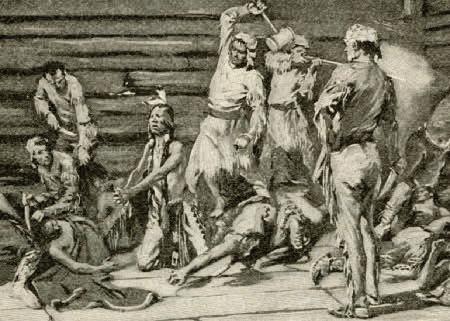
raiders attacking Gnadenhutten on the Muskingum in 1782,” Sterner writes, “frontier warfare had always been brutal and indiscriminate, no matter who waged it.”
The savagery along the Muskingum was of a higher order, shocking Benjamin Franklin when the news reached him 4,000 miles away in Paris. Franklin wrote, “The abominable Murders committed by some of the frontier People on the poor Moravian Indians, has given me infinite Pain and Vexation. The Dispensations of Providence in this World puzzle my weak Reason. I cannot comprehend why cruel Men should have been permitted thus to destroy their Fellow Creatures.”
By rights, the so-called “Christian Delaware” should not have even been in Gnadenhutten on March 8. They had resettled in northwestern Ohio along the Sandusky River, but too late to plant crops. Some of the Delaware returned to Gnadenhutten to salvage what remained of the crops planted in 1781.
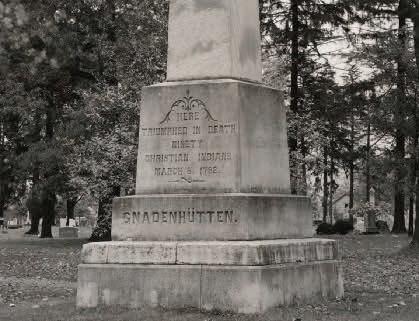
In the final chapter of Anatomy of a Massacre, “Calamities,” Sterner describes the rising tensions along the frontier
and the untenable circumstances the Moravian missionaries and the Delaware faced.
“When the (Revolutionary) war led some individuals and communities to choose sides, they sought to force others to make the same choice,” Sterner writes. “The Moravian congregations resisted… Instead, the Moravians tried desperately to remain neutral by appeasing both sides. Breaking off relations with either the British and Great Lakes Indians to the west or the Americans to the east was impossible.”
After the militiamen accused them of stealing horses, the “Moravian Indians who had navigated frontier violence for so long, began to recognize that their time had come,” Sterner writes dispassionately. “The congregants began singing hymns and praying together, as they had done for years during daily services.”
(Note: Williamson's militia continued to attack Ohio Country American Indian communities for the remainder of the Revolutionary War.)
—Bill Eichenberger, Echoes Magazine
50 Echoes | MARCH & APRIL 2023
BOOK
Shop our Ohio History Store in person at the Ohio History Center or online at ohiohistorystore.com for this title and more.
Ohio
Left: Illustration from the book Stories of Ohio (1897) by William Dean Howells showing the massacre of American Indians led by Col. David Williamson of the Pennsylvania militia. Right: This photo shows the base of a 35-foot tall stone obelisk at the site of the massacre in Gnadenhutten. Dedicated in 1872, it is inscribed “Here triumphed in death ninety Christian Indians, March 8, 1782.”
History Connection Archival Collections
A National Natural Landmark, the Ohio History Connection’s Cedar Bog Nature Preserve near Urbana and Springfield has many rare plants and animals. In fact, Cedar Bog is home to 40% of Ohio’s rare species, all in one location. Experience Ohio as it was over 10,000 years ago as you travel a mile-long boardwalk through this 450-acre preserve. See page 14.

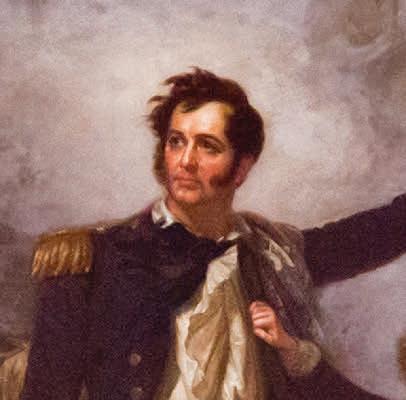




OHIO HISTORY CONNECTION 800 E. 17th Ave. Columbus, OH 43211-2474 ohiohistory.org ADDRESS SERVICE REQUESTED NON-PROFIT ORG. U.S. POSTAGE PAID COLUMBUS, OH PERMIT No. 1157 All hands on deck!
An easy way to support your community! Your donation funds local history grants in Ohio. ohiohistory.org/historyfund GIVE TO THE Ohio History Fund ON YOUR State Tax Return.
Commodore Oliver Perry featured in Perry’s Victory, painted by William Powell of Cincinnati




























































 CLEVELAND ’ S UNSTOPPABLE INVENTOR BY BRITTANY MOSELEY
CLEVELAND ’ S UNSTOPPABLE INVENTOR BY BRITTANY MOSELEY






















































